Lunar mission "Bereshit": landing-accident-fall on the moon
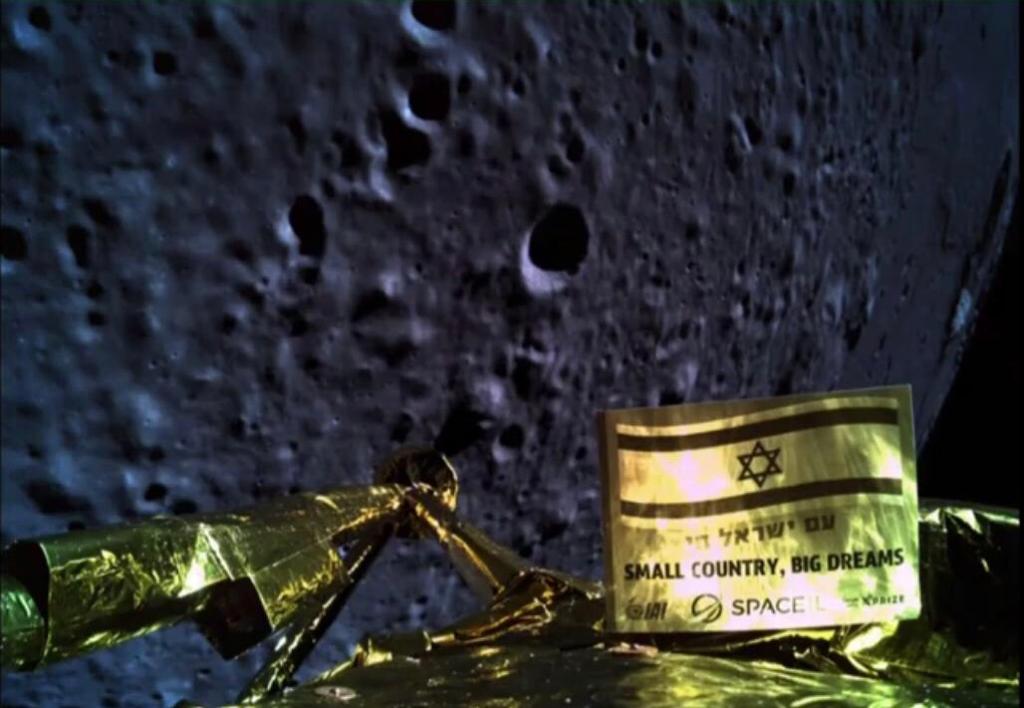
On April 11, 2019 at 22.25 MSK, an emergency landing (falling on the lunar surface) of the first private spacecraft to the moon was performed.
More than 47 days of flight in outer space, more than 6.5 million kilometers traveled, impossible - the problems with blinding the position sensors and restarting the on-board computer in the process of performing important maneuvers in Earth’s orbit were defeated, a complex gravitational jump into the Moon’s orbit was performed, and on April 11, 2019, the first Israeli spacecraft Bereshit made a hard and destructive landing on the visible side of the moon in the Sea of Clarity (failure of one of the inertial orientation blocks).
Although, 1 million dollars from XPRIZE the project team will receive.
Attention, there are a lot of pictures inside.
This moment was waited a very long time. But they did not wait. Orientation equipment led to the very end of the landing procedure.
What an interesting landing formulation: XPRIZE has decided to recognize SpaceIL's achievement with a $ 1 million Moonshot Award for its groundbreaking achievements .
It is assumed that the diameter of the formed crater after falling from 3 to 5 meters and the LRO probe can fix it. The Bereshit apparatus crashed into the lunar surface at a small angle (~ 8 °), the crater can be elongated.
Israel is the 7th country that “dropped” a spacecraft on the moon:



Israel at the moment has not become the fourth country that organized the landing of its scientific apparatus on the Moon, after the USSR (1959), USA (1966) and China (2013), ahead of India by just a few days / months.
This accident during the final part of the Bereshit apparatus landing process is not considered a landing, since the apparatus was completely destroyed by a blow to the surface.

Devices on the Moon:
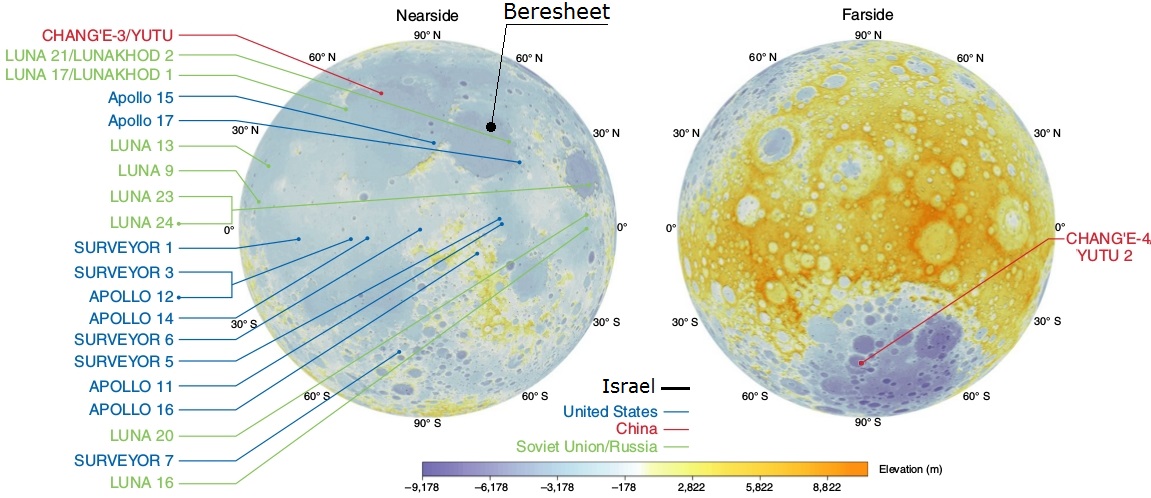

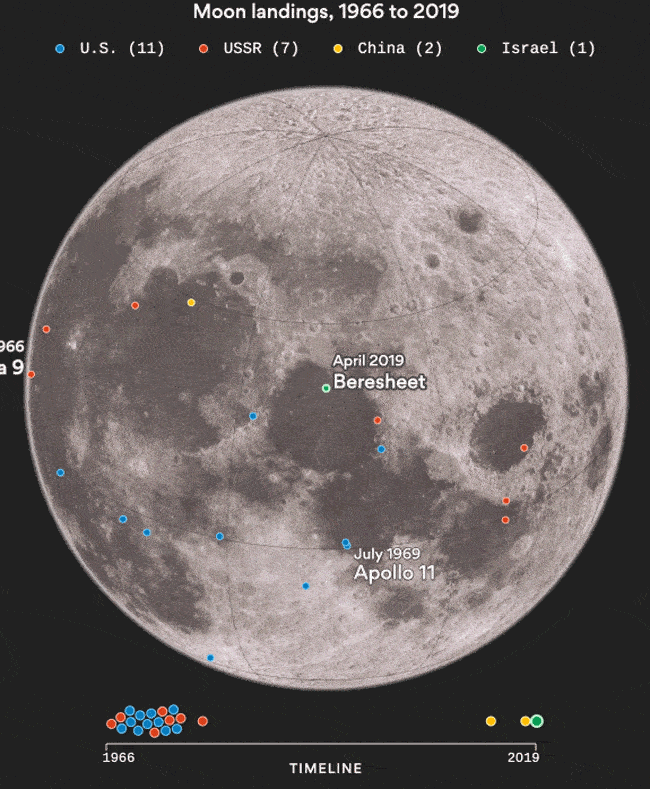
An interactive map with the devices is located here .
Previously published materials about the Bereshit mission:
1. Lunar mission "Bereshit" - an online portal with a trajectory simulator and monitoring of current flight parameters .
2. The lunar mission "Bereshit" - a selfie on the background of the Earth .
3. Lunar mission "Bereshit" - engineers at the MCC SpaceIL and Israel Aerospace Industries (IAI) solved the problems .
4. Lunar mission "Bereshit" - the characteristics of the device, a series of maneuvers and the longest way to the moon .
5. Lunar mission "Bereshit" - the fourth maneuver was completed successfully, preparations are underway for entering the lunar orbit .
6. Lunar mission "Bereshit" - the first video from the onboard camera and new photos in outer space .
7.Bereshit lunar mission - eight milestones of success and $ 1 million from the XPRIZE Foundation (subject to a successful landing) .
8. Lunar mission “Bereshit” - April 4, 2019, the transition to the lunar orbit was completed, 7 days of flight, 6 maneuvers and 1 landing ahead .
2. The lunar mission "Bereshit" - a selfie on the background of the Earth .
3. Lunar mission "Bereshit" - engineers at the MCC SpaceIL and Israel Aerospace Industries (IAI) solved the problems .
4. Lunar mission "Bereshit" - the characteristics of the device, a series of maneuvers and the longest way to the moon .
5. Lunar mission "Bereshit" - the fourth maneuver was completed successfully, preparations are underway for entering the lunar orbit .
6. Lunar mission "Bereshit" - the first video from the onboard camera and new photos in outer space .
7.Bereshit lunar mission - eight milestones of success and $ 1 million from the XPRIZE Foundation (subject to a successful landing) .
8. Lunar mission “Bereshit” - April 4, 2019, the transition to the lunar orbit was completed, 7 days of flight, 6 maneuvers and 1 landing ahead .
A project is considered successful if all of its milestones are completed.
The main milestones of the Bereshit mission were completed, except for the last - there is failure:
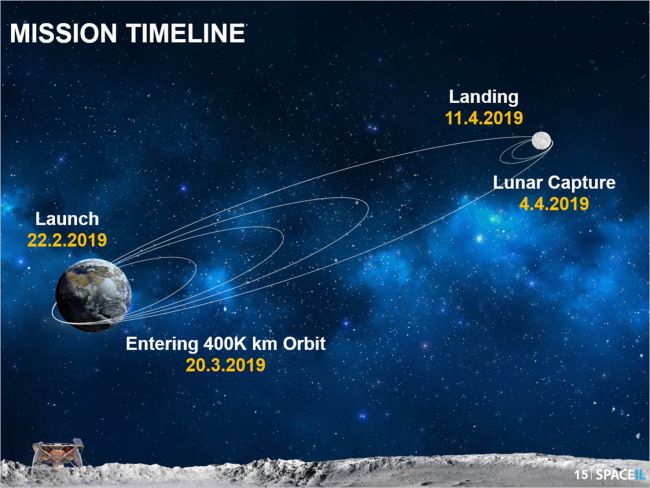
Briefly about the Bereshit mission: 8 years of development, the project cost $ 100 million, 200 volunteer scientists and engineers, 47 days of flight and more than 6.5 million kilometers were overcome, at the start 380 kilograms of fuel, 6 onboard cameras, and 1 landing, only 48 hours of work on the moon and remotely resolved problems and malfunctions in outer space.
Problems and solutions that were in space (there were many reloads of the BC!):
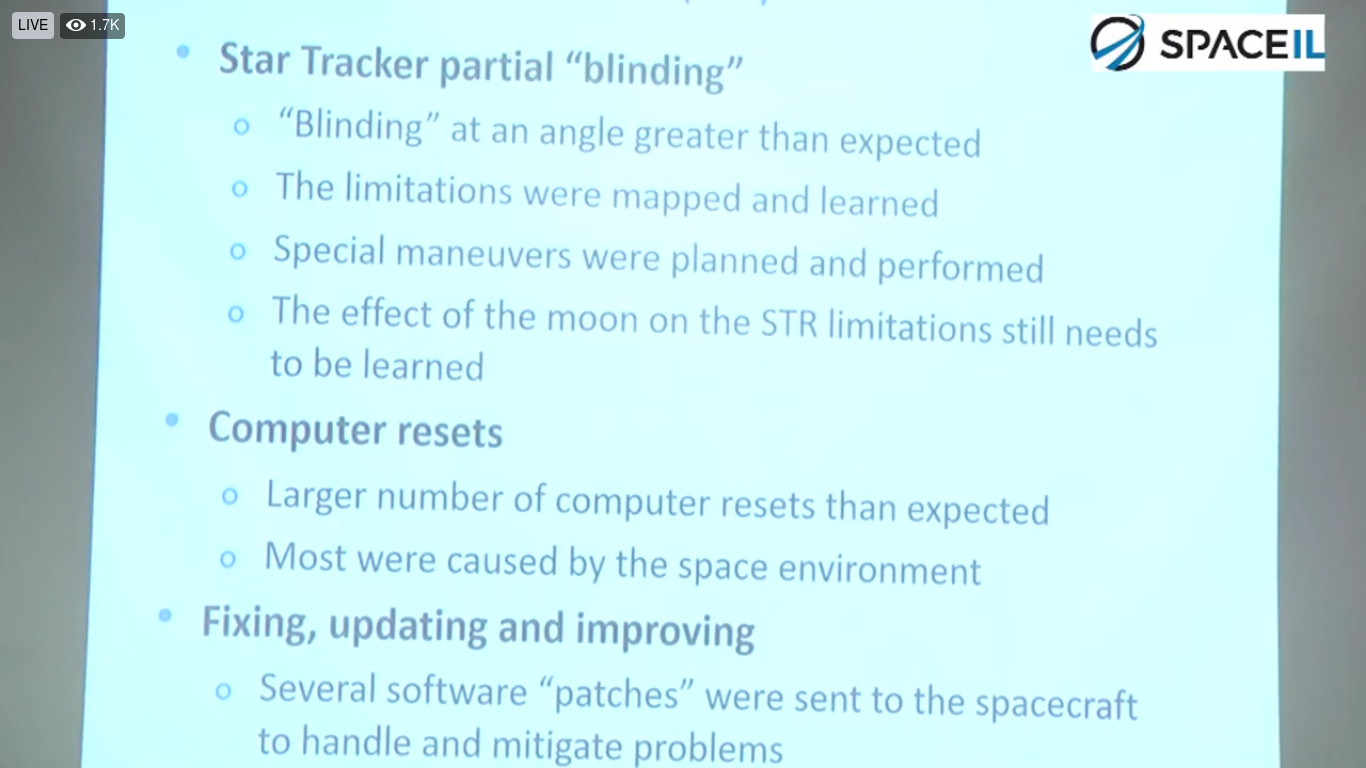
The purpose of the mission: the desire to promote the development of technological and scientific progress in Israel, to complete the world's first private space moon program.
List of countries (first orbiters taken into account) with devices in orbit of the moon:
1. Luna-10, USSR, 1966;
2. Lunar Orbiter 1, USA, 1966;
3. Hagoromo, Japan, 1990;
4. SMART-1, ESA, 2005;
5. Chang'e-1, China, 2007;
6. Chandrayan-1, India, 2008;
7. Beresheet, Israel, 2019.
The main characteristics of the mission and the lunar vehicle "Bereshit":
- start of the mission: February 22, 2019;
- Planned end of the mission: landing on April 11, 2019, loss of communication with the device on April 14, 2019;
- the trajectory of movement to the Moon (in fact, the maximum possible): complex, changeable by performing a series of maneuvers (turning on the engines for several seconds or even minutes) to increase the apogee of its elliptical upholstery after each orbit around the Earth;
- the height of the Bereshit apparatus is about 1.5 meters, a diameter of 2 meters (2.3 meters between landing supports);
- weight 530 kilograms with fuel (fuel weight - 380 kg), 150 kg without fuel;
- main engine: modification of LEROS 2b;
- The main element of the on-board computer: dual-core processor Gaisler HiRel GR712RC;
- Six 8-megapixel cameras Imperx Bobcat B3320C with optics Ruda;
- scientific instruments: magnetometer, array of laser corner reflectors.
Using a magnetometer (manufacturer - Weizmann Institute, Israel), it is planned to conduct a series of measurements of the magnetic field of the moon in the landing zone.
A laser altimeter LRO (lunar orbital probe NASA), designed to compile altitude maps, will send laser light pulses to the corner reflector of the Bereshit apparatus, and then measure how long it takes light to return.
Using this technique, NASA and SpaceIL engineers plan that they will be able to determine the location of the Bereshit device with an accuracy of 10 centimeters.
Also, when the Bereshit apparatus performs the landing procedure, the LRO (NASA lunar orbiting probe) will analyze the “exhaust gases” of the main liquid engine.
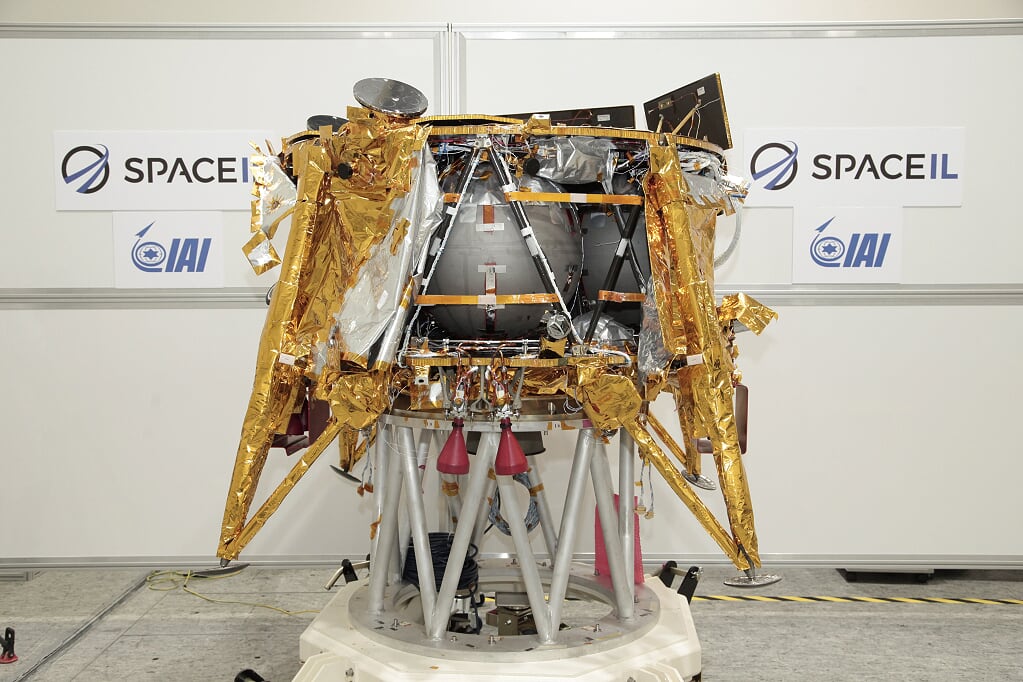
SpaceIL does not have its own space communication center, so the organization of data transfer between the MCC on Earth and the Bereshit device in space is a complex process that involves:
- the antenna network of the Swedish Space Corporation, thanks to which the device “ Bereshit ”transmitted navigation commands and tracked its trajectory;
- NASA's long-distance space communications network (DSN) to control the Bereshit spacecraft and transfer scientific data from the spacecraft to the Earth after it landed on the moon.
DSN is a network of radio telescopes and a system of dozens of huge antennas for communication with spacecraft in deep space, it is managed by the NASA Jet Propulsion Laboratory in Pasadena (California).
The Bereshit device was developed by SpaceIL organizations, which is supported mainly by private investors, including American tycoon Sheldon Adelson and billionaire Morris Kahn, who are also co-founders of Amdocs (DOX), one of Israel’s largest companies.
It is impossible to send the lunar apparatus into space by the forces and means of only one small private company, but with the help of the international space community, you can turn the idea into a full-fledged project currently being implemented.
Project participants involved in the Bereshit mission:
- a team of young Israeli scientists and engineers from SpaceIL,
- NASA (USA),
- ISA (Israeli Space Agency),
- IAI (Israeli Aviation Industry Concern),
- Spaceflight Industries (USA, organizer of the Bereshit device launch) into orbit),
- SpaceX company (USA, Falcon 9 launch vehicle),
- Swedish Space Corporation (Swedish Space Corporation),
- Cobham company (Sweden),
- Ramon Chips company (Israel).

After all, SpaceIL is a small organization by world standards, it employs about 200 people, and most of them are volunteer scientists and engineers who "seek to promote the development of technological and scientific progress in Israel."
- Planned end of the mission: landing on April 11, 2019, loss of communication with the device on April 14, 2019;
- the trajectory of movement to the Moon (in fact, the maximum possible): complex, changeable by performing a series of maneuvers (turning on the engines for several seconds or even minutes) to increase the apogee of its elliptical upholstery after each orbit around the Earth;
- the height of the Bereshit apparatus is about 1.5 meters, a diameter of 2 meters (2.3 meters between landing supports);
- weight 530 kilograms with fuel (fuel weight - 380 kg), 150 kg without fuel;
- main engine: modification of LEROS 2b;
- The main element of the on-board computer: dual-core processor Gaisler HiRel GR712RC;
- Six 8-megapixel cameras Imperx Bobcat B3320C with optics Ruda;
- scientific instruments: magnetometer, array of laser corner reflectors.
Using a magnetometer (manufacturer - Weizmann Institute, Israel), it is planned to conduct a series of measurements of the magnetic field of the moon in the landing zone.
A laser altimeter LRO (lunar orbital probe NASA), designed to compile altitude maps, will send laser light pulses to the corner reflector of the Bereshit apparatus, and then measure how long it takes light to return.
Using this technique, NASA and SpaceIL engineers plan that they will be able to determine the location of the Bereshit device with an accuracy of 10 centimeters.
Also, when the Bereshit apparatus performs the landing procedure, the LRO (NASA lunar orbiting probe) will analyze the “exhaust gases” of the main liquid engine.

SpaceIL does not have its own space communication center, so the organization of data transfer between the MCC on Earth and the Bereshit device in space is a complex process that involves:
- the antenna network of the Swedish Space Corporation, thanks to which the device “ Bereshit ”transmitted navigation commands and tracked its trajectory;
- NASA's long-distance space communications network (DSN) to control the Bereshit spacecraft and transfer scientific data from the spacecraft to the Earth after it landed on the moon.
DSN is a network of radio telescopes and a system of dozens of huge antennas for communication with spacecraft in deep space, it is managed by the NASA Jet Propulsion Laboratory in Pasadena (California).
The Bereshit device was developed by SpaceIL organizations, which is supported mainly by private investors, including American tycoon Sheldon Adelson and billionaire Morris Kahn, who are also co-founders of Amdocs (DOX), one of Israel’s largest companies.
It is impossible to send the lunar apparatus into space by the forces and means of only one small private company, but with the help of the international space community, you can turn the idea into a full-fledged project currently being implemented.
Project participants involved in the Bereshit mission:
- a team of young Israeli scientists and engineers from SpaceIL,
- NASA (USA),
- ISA (Israeli Space Agency),
- IAI (Israeli Aviation Industry Concern),
- Spaceflight Industries (USA, organizer of the Bereshit device launch) into orbit),
- SpaceX company (USA, Falcon 9 launch vehicle),
- Swedish Space Corporation (Swedish Space Corporation),
- Cobham company (Sweden),
- Ramon Chips company (Israel).

After all, SpaceIL is a small organization by world standards, it employs about 200 people, and most of them are volunteer scientists and engineers who "seek to promote the development of technological and scientific progress in Israel."
About the landing site of the Bereshit device:
According to estimates, the Bereshit apparatus should make a soft landing on April 11, 2019 on a dark lava plain known as the Sea of Clarity, not far from the region where astronauts of the Apollo 17 mission landed on December 11, 1972.
SpaceIL promised to record the landing on video and show it after a while in the public domain.
Planned landing area of the Bereshit spacecraft:
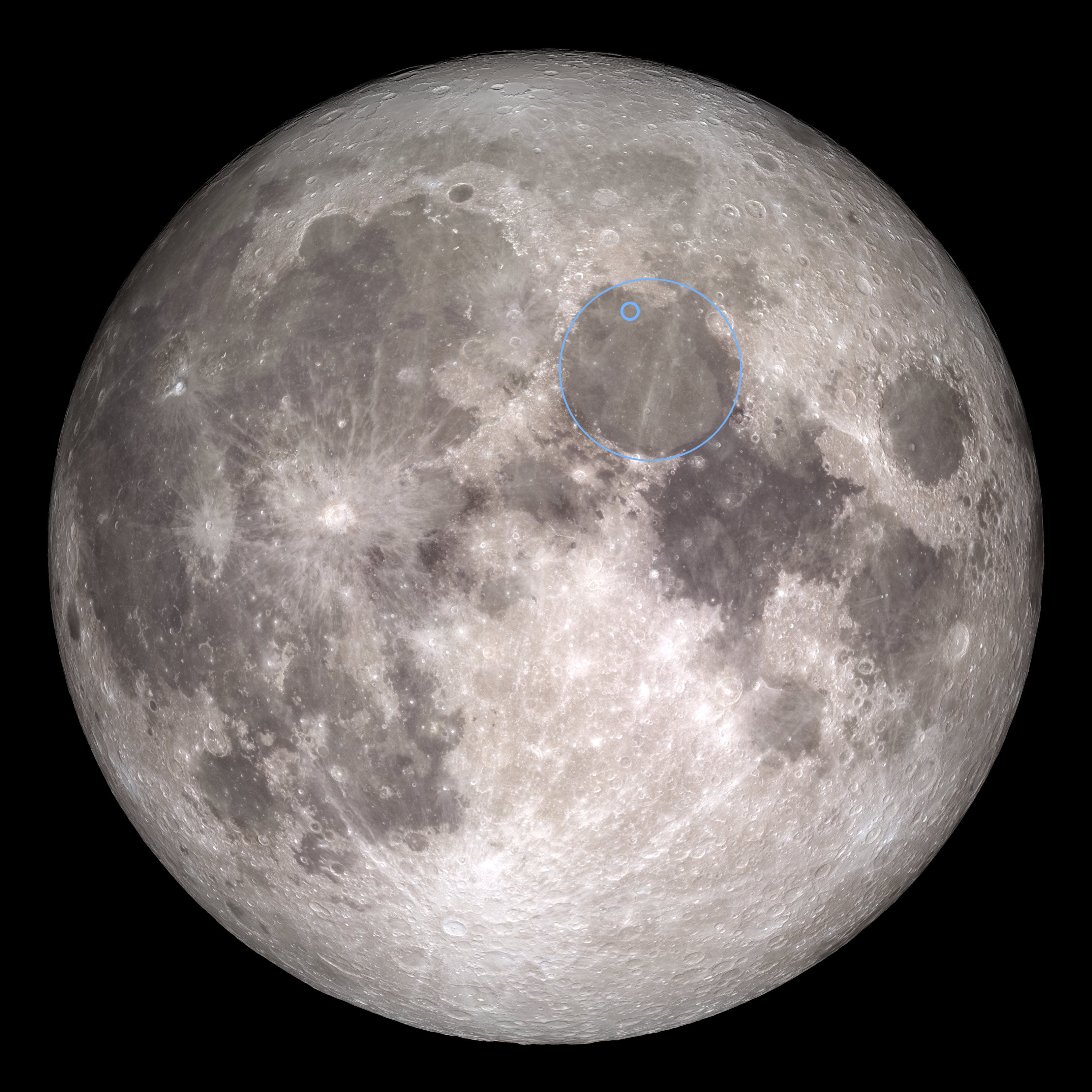


The Bereshit spacecraft has no thermal protection and cooling systems, the estimated operating time on the lunar surface is approximately two Earth days (three days maximum), then its electronics will fail due to overheating, communication with the spacecraft will be lost and it will become the new lunar monument in the Sea of Clarity, next to Lunokhod-2 (Luna-21 missions) and Apollo 17 mission modules.
The date of April 11, 2019 is chosen based on the fact that on the surface of the moon in the landing zone at this time it will be sunny, but not hot. But the temperature on the lunar surface reaches + 127 ° C, depending on the degree of illumination.
Thus, the Bereshit apparatus should land in the northern part of the Sea of Clarity 48 hours after dawn in this region, when the temperature is relatively low.
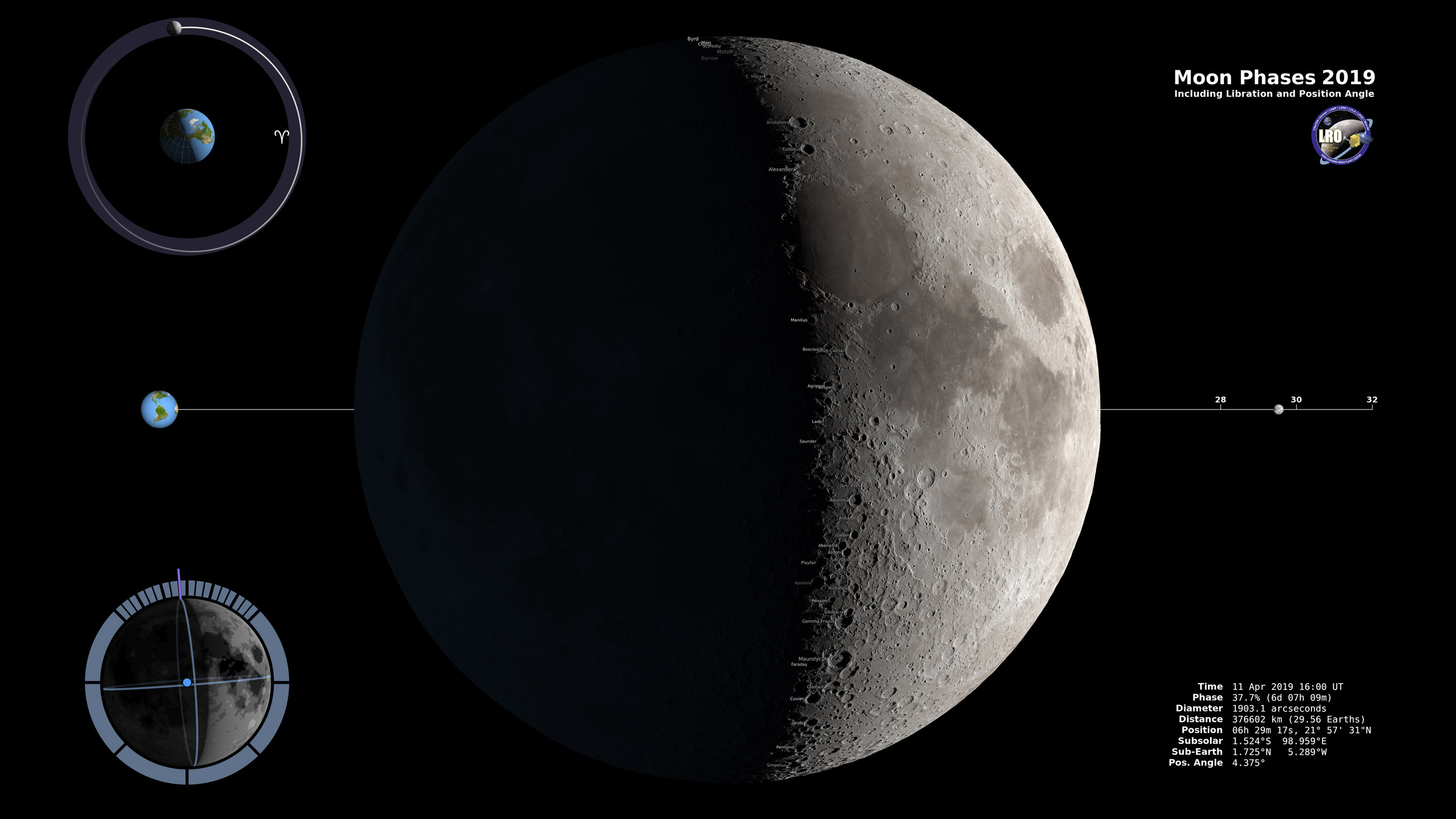
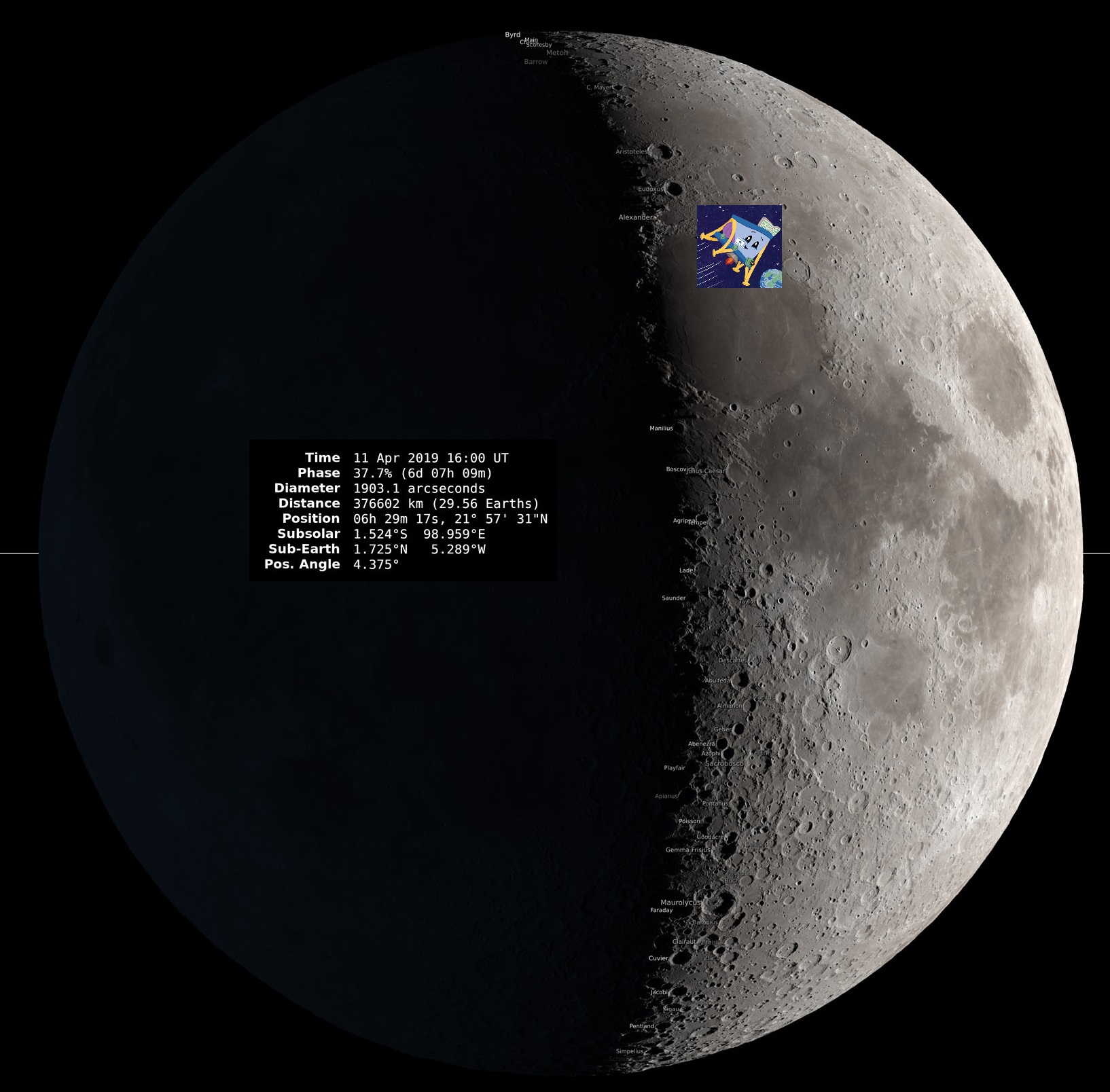
When landing, the Bereshit on-board computer automatically finds the most suitable landing area (there is still a limitation: the planned landing area is 30 square kilometers).
With the help of engines, the Bereshit apparatus will reduce its speed to 0, after which engines will be completely turned off at an altitude of five meters above the lunar surface.
Further, the Bereshit apparatus will begin a slow free fall on the lunar surface with subsequent touch. If everything goes smoothly, then at that moment the Bereshit spacecraft will become the first private spacecraft on the moon.
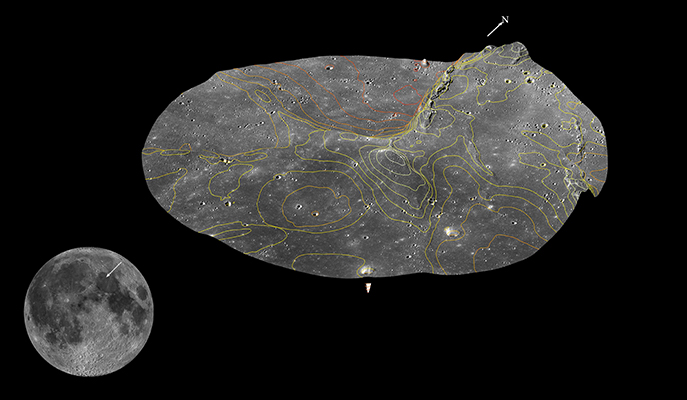
The planned landing site of the Bereshit apparatus is located in this region of the lunar surface:
Why did you choose a landing site in the Sea of Clarity?
Criteria for choosing a site for landing the Bereshit apparatus:
SpaceIL promised to record the landing on video and show it after a while in the public domain.
Planned landing area of the Bereshit spacecraft:



The Bereshit spacecraft has no thermal protection and cooling systems, the estimated operating time on the lunar surface is approximately two Earth days (three days maximum), then its electronics will fail due to overheating, communication with the spacecraft will be lost and it will become the new lunar monument in the Sea of Clarity, next to Lunokhod-2 (Luna-21 missions) and Apollo 17 mission modules.
The date of April 11, 2019 is chosen based on the fact that on the surface of the moon in the landing zone at this time it will be sunny, but not hot. But the temperature on the lunar surface reaches + 127 ° C, depending on the degree of illumination.
Thus, the Bereshit apparatus should land in the northern part of the Sea of Clarity 48 hours after dawn in this region, when the temperature is relatively low.


When landing, the Bereshit on-board computer automatically finds the most suitable landing area (there is still a limitation: the planned landing area is 30 square kilometers).
With the help of engines, the Bereshit apparatus will reduce its speed to 0, after which engines will be completely turned off at an altitude of five meters above the lunar surface.
Further, the Bereshit apparatus will begin a slow free fall on the lunar surface with subsequent touch. If everything goes smoothly, then at that moment the Bereshit spacecraft will become the first private spacecraft on the moon.

The planned landing site of the Bereshit apparatus is located in this region of the lunar surface:
Why did you choose a landing site in the Sea of Clarity?
Criteria for choosing a site for landing the Bereshit apparatus:
- a large safe area in the landing zone with the ability to maneuver as necessary when lowering and land the first time;
- a site with a relatively small number of craters, free-standing stones or steep slopes in the landing zone;
- the presence in the landing zone of magnetic anomalies for the use of a magnetometer.
Video about the flight path of the Bereshit device:
This is how the flight of the Bereshit apparatus in the pictures looks in the description from the engineers of the SpaceIL organization: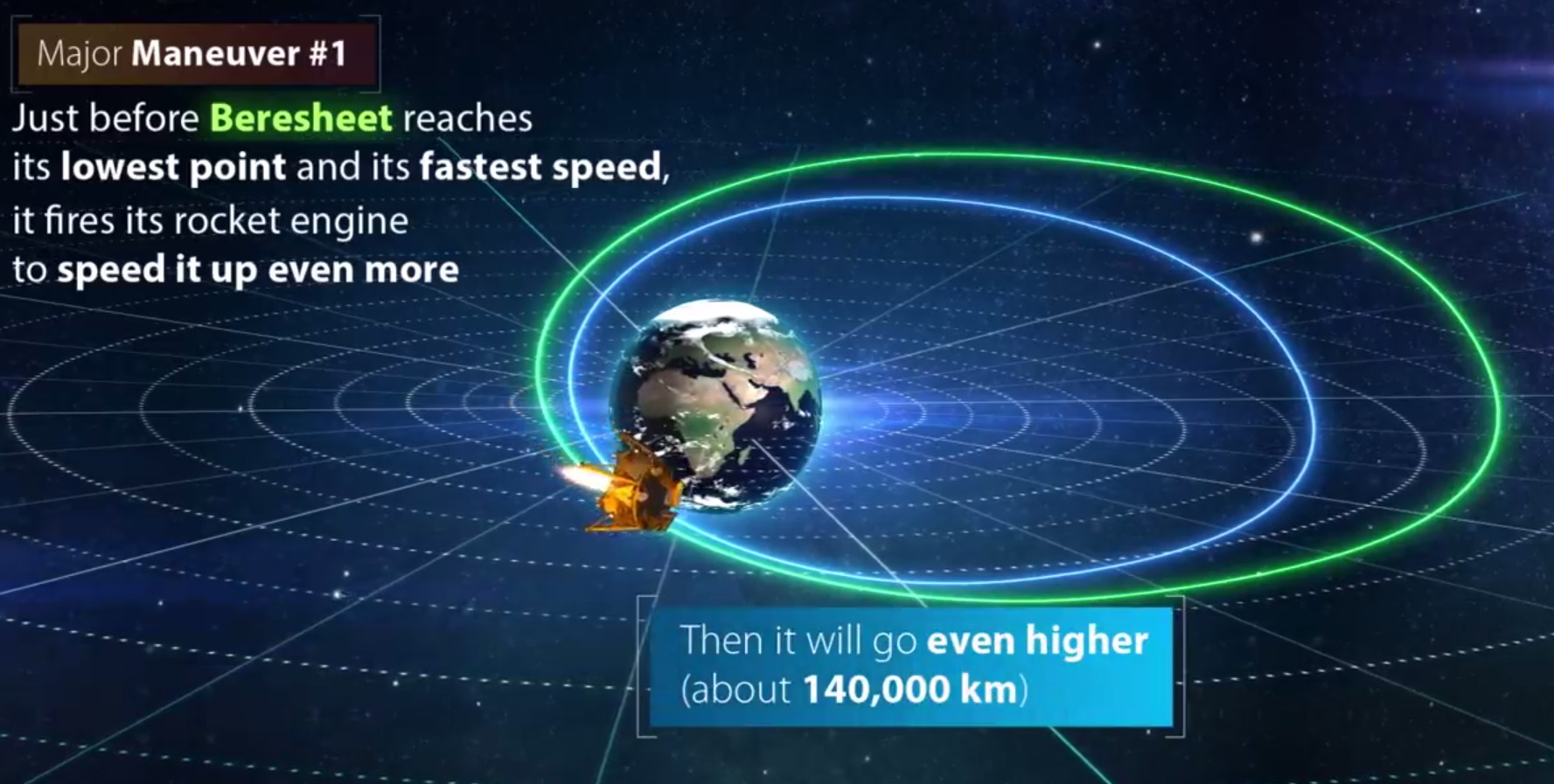

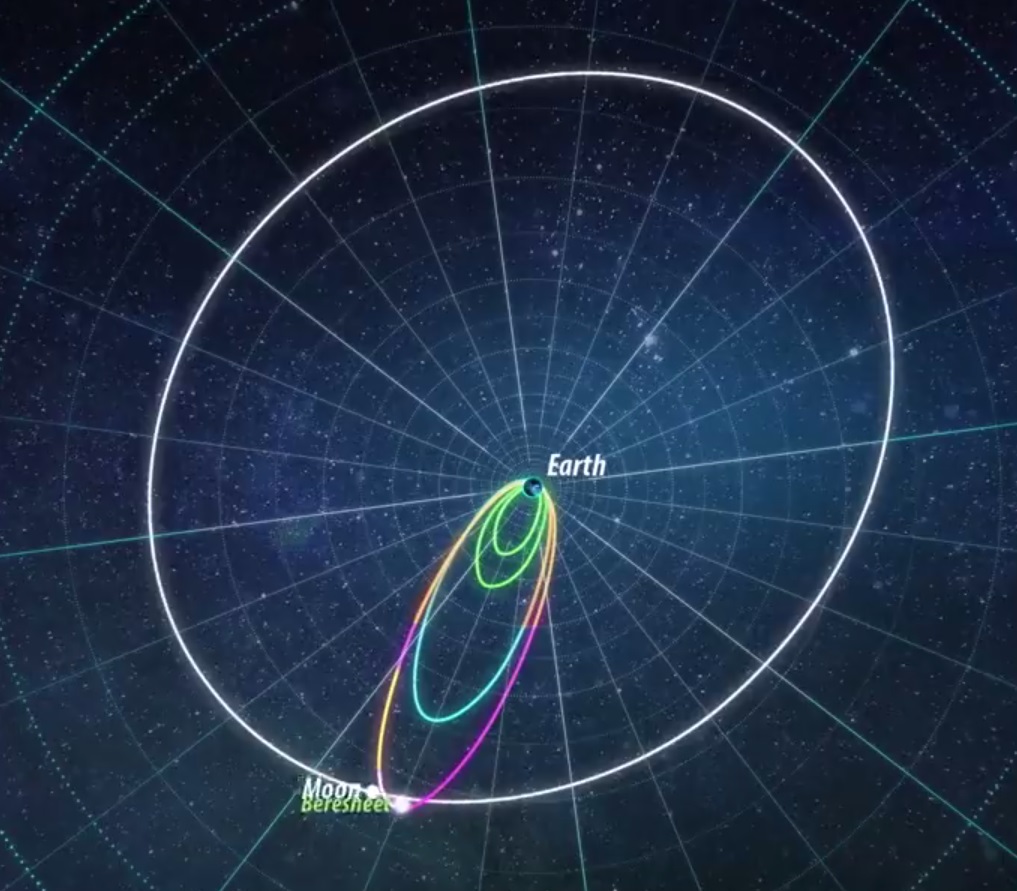
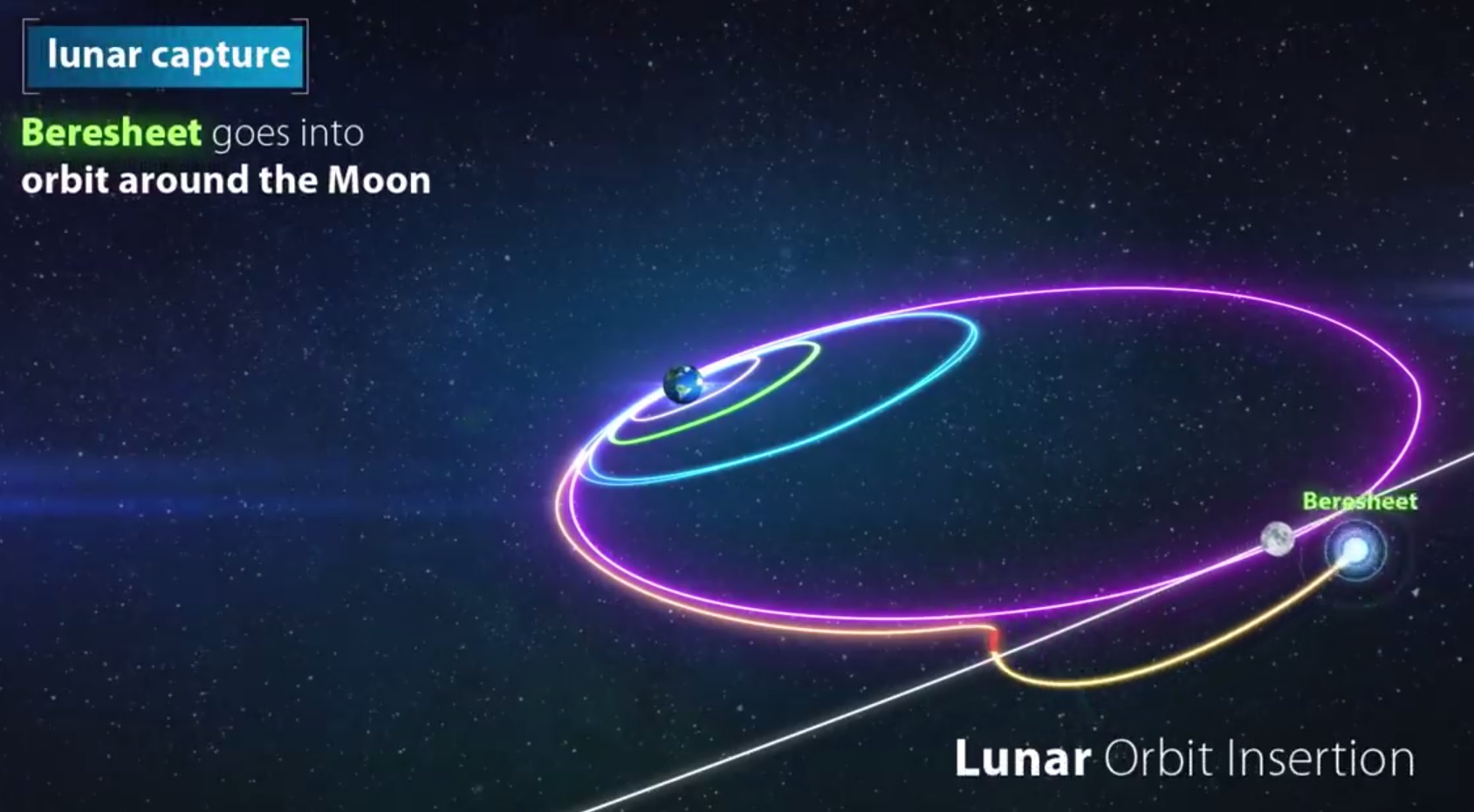

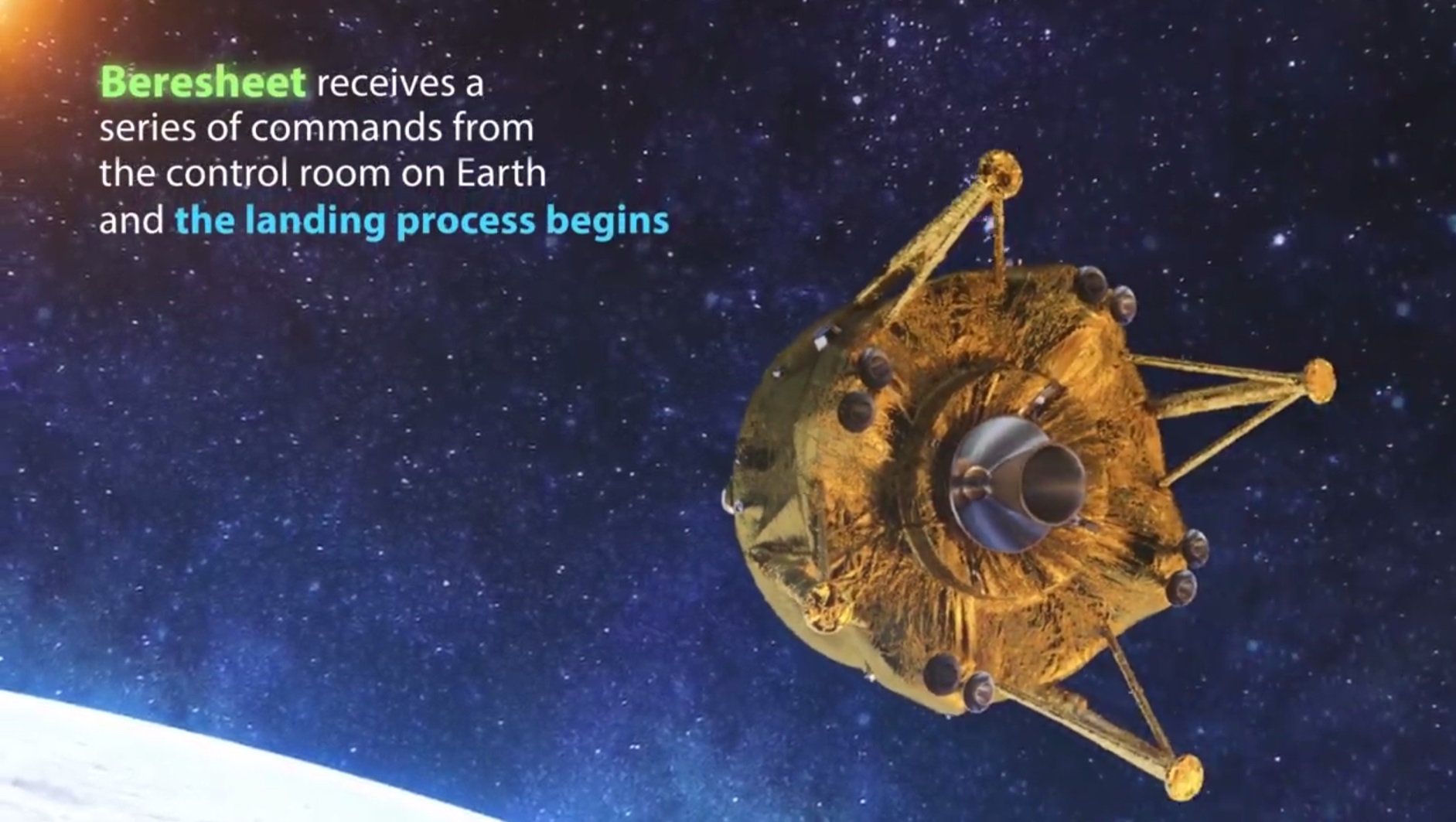
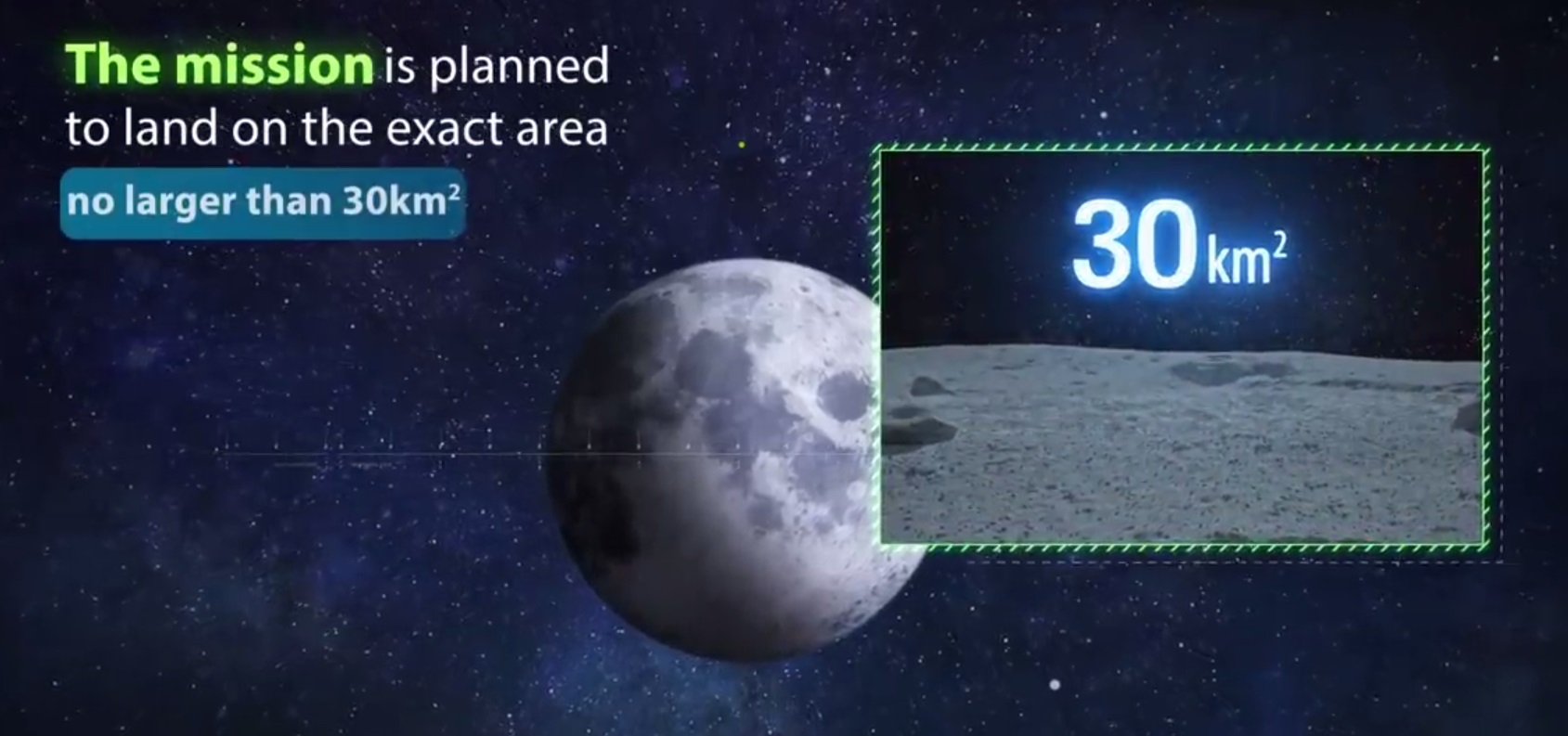















Video script about the mission "Bereshit":
Dream:
Creation:
Reality:
Photos and videos previously taken by the Bereshit device:
A short (12 seconds) video from the Bereshit on-board camera was recorded shortly after separation from Falcon 9. In the background are the contours of the installation with the main payload (Indonesian communications satellite) performing correction of its position, the moon is visible on the left side. At the end of the roller, the mechanism for extending the landing support of the Bereshit apparatus, which was folded at the start, is activated.
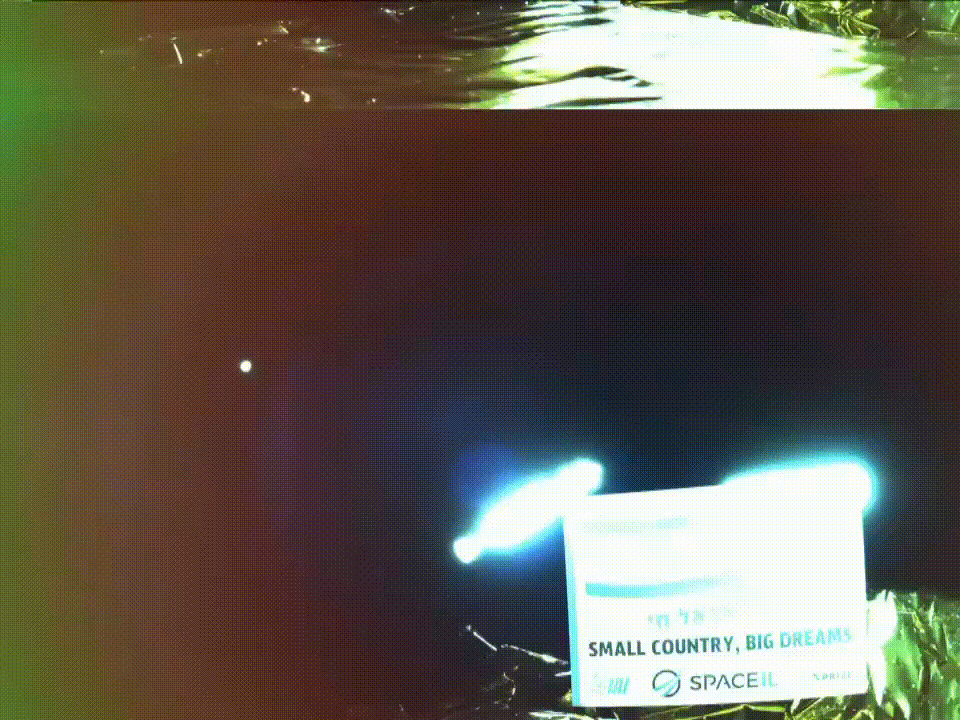
Photos from a distance of 15,000 km:
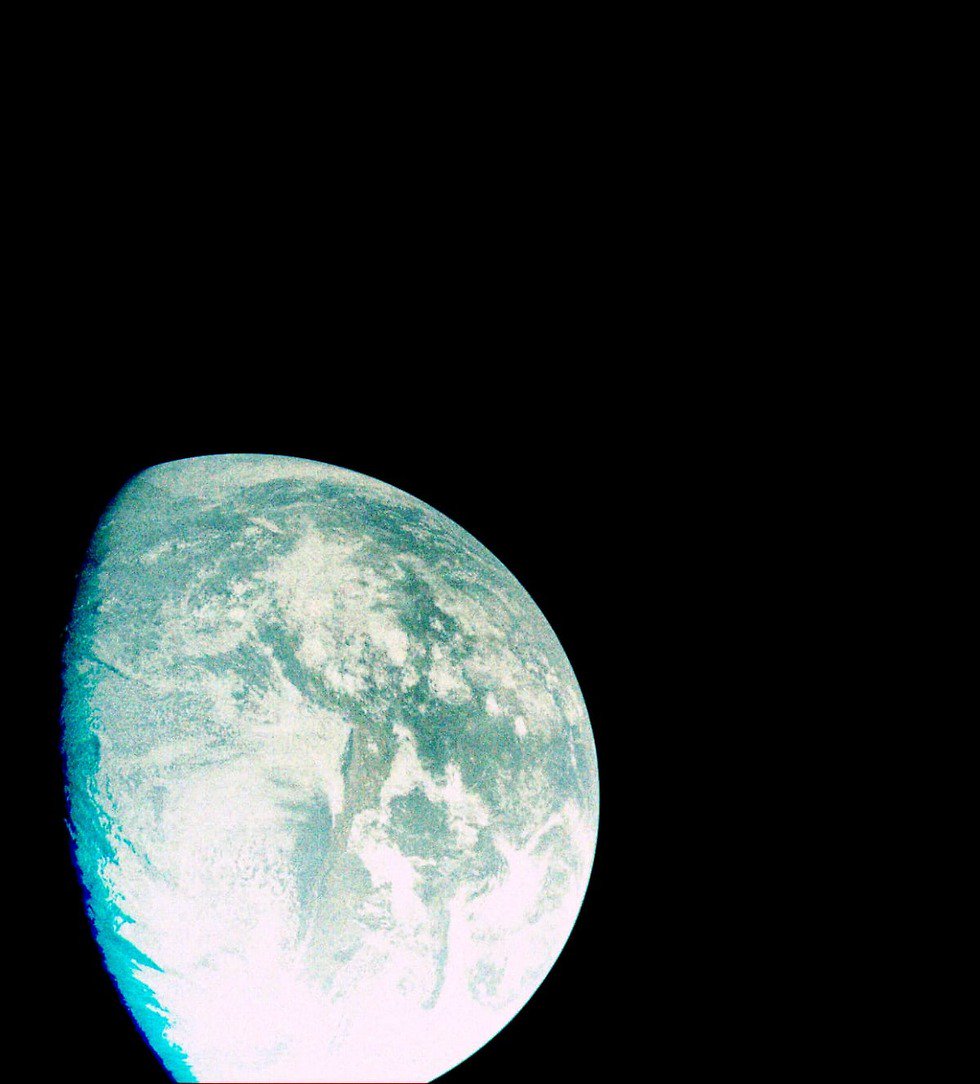
Photos from March 3, 2019 from a distance of 37,600 km:
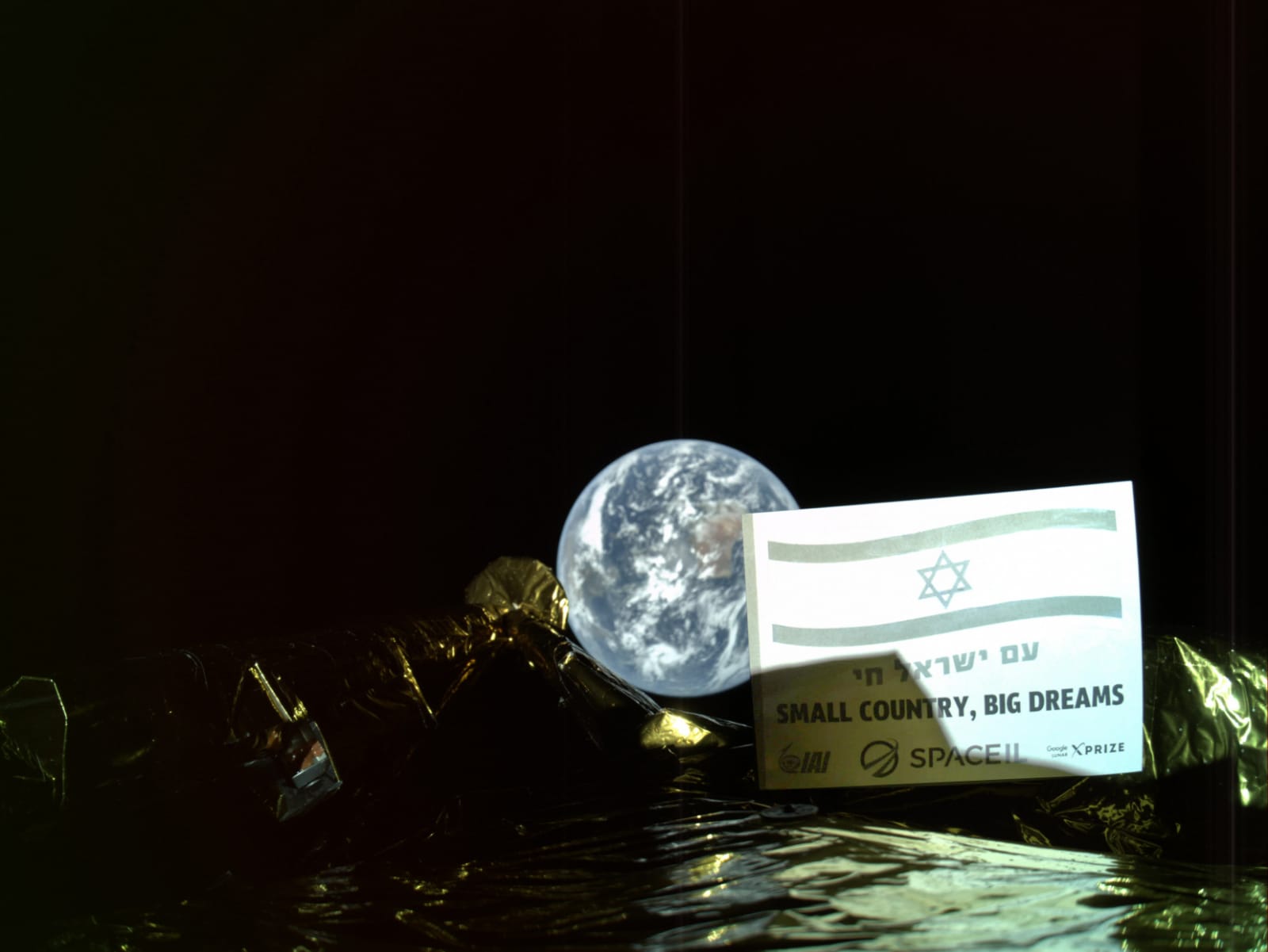
Photos from a distance of 131,000 km:
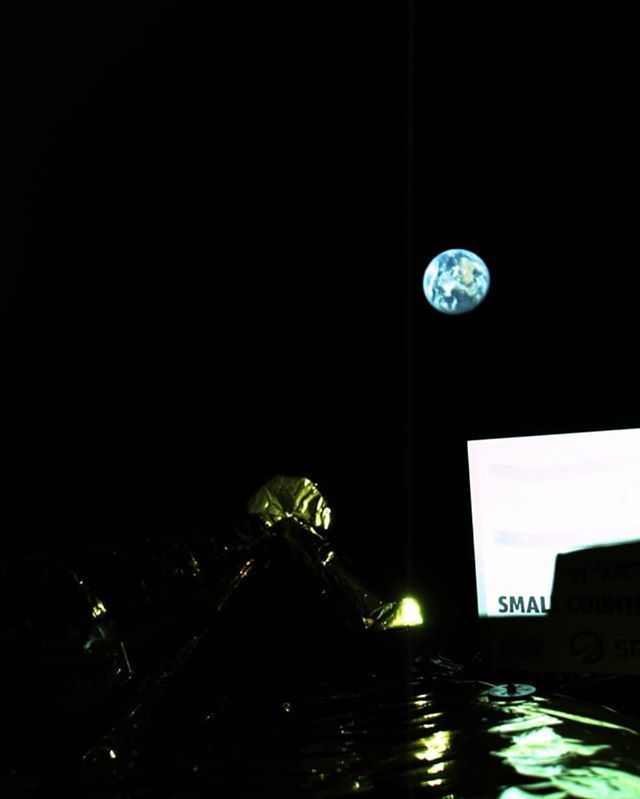
Photos from a distance of 265,000 km:
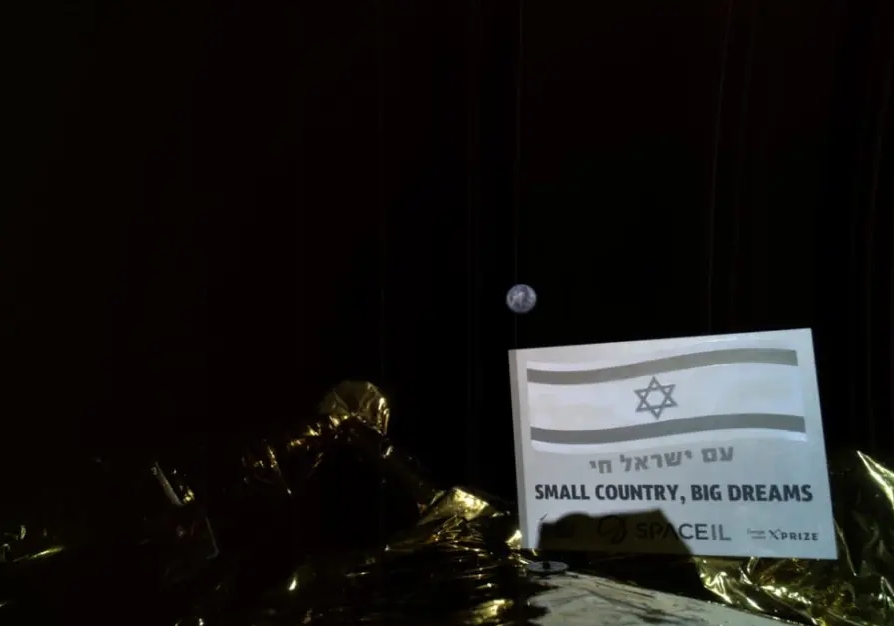
March 31, 2019, the Bereshit satellite made the last flyby of the Earth and made such a wonderful one at a distance of 16,000 km photograph (visible on the Arabian Peninsula and northeastern Africa):
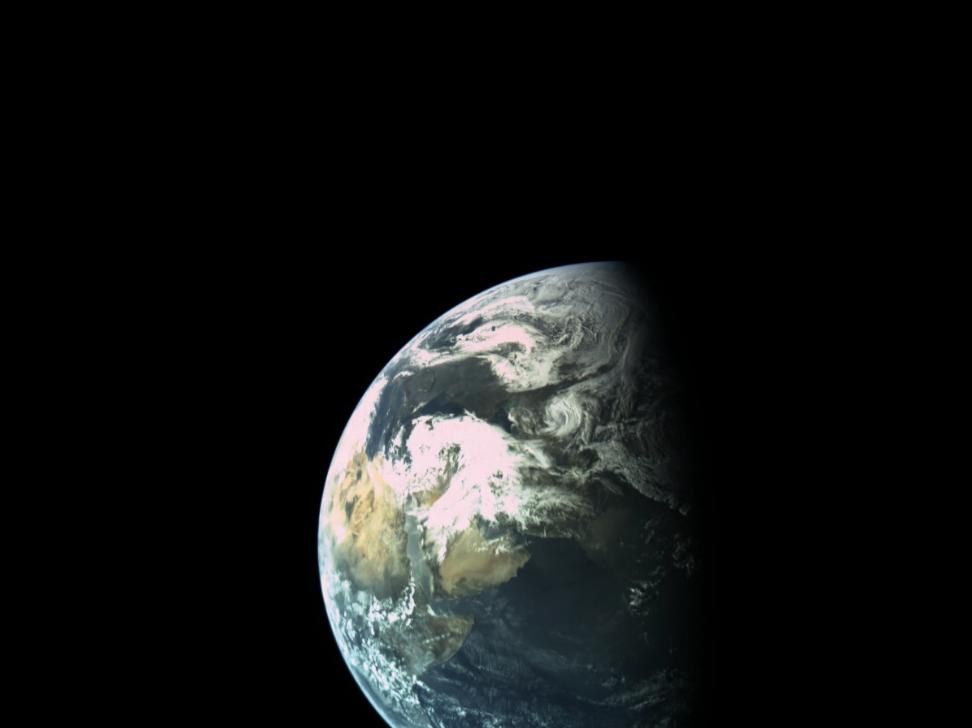
April 4, 2019, the distance to the surface of the moon is 500 km. The white disk is the Earth! View of the back of the moon.



Photos from a distance of 15,000 km:

Photos from March 3, 2019 from a distance of 37,600 km:

Photos from a distance of 131,000 km:

Photos from a distance of 265,000 km:

March 31, 2019, the Bereshit satellite made the last flyby of the Earth and made such a wonderful one at a distance of 16,000 km photograph (visible on the Arabian Peninsula and northeastern Africa):

April 4, 2019, the distance to the surface of the moon is 500 km. The white disk is the Earth! View of the back of the moon.


Lunar photographs from April 7, 2019:
Distance to the Moon 550 km:
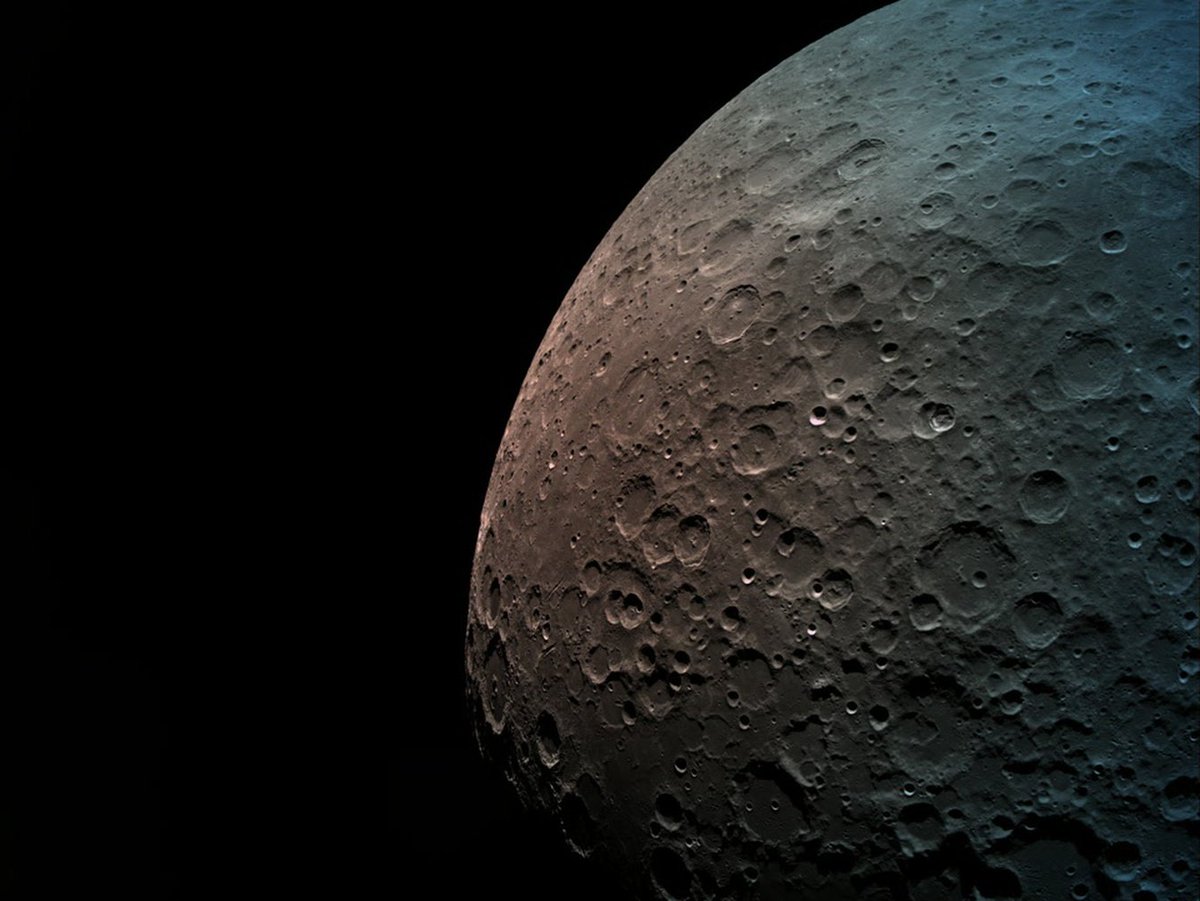
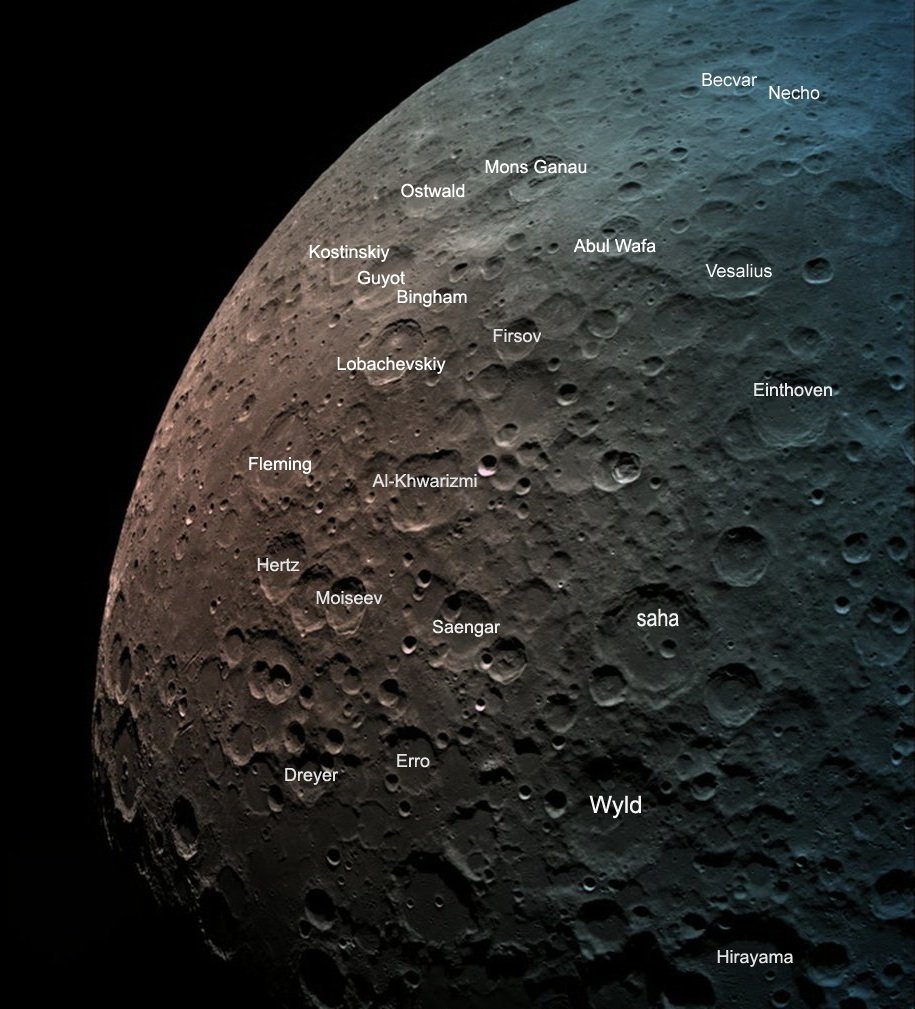
Distance to the Moon 2,500 km:
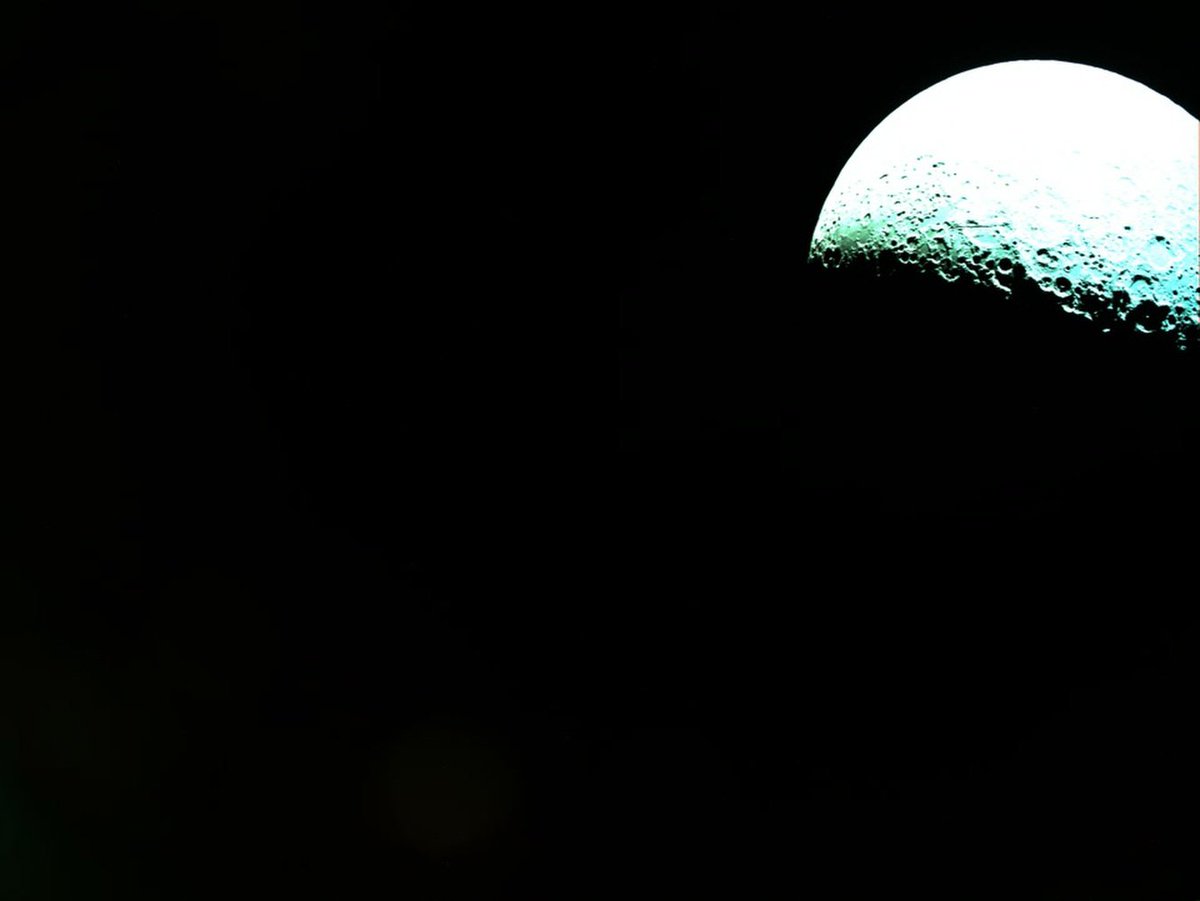
In NASA's online simulator “ Eyes on the Solar System ”:
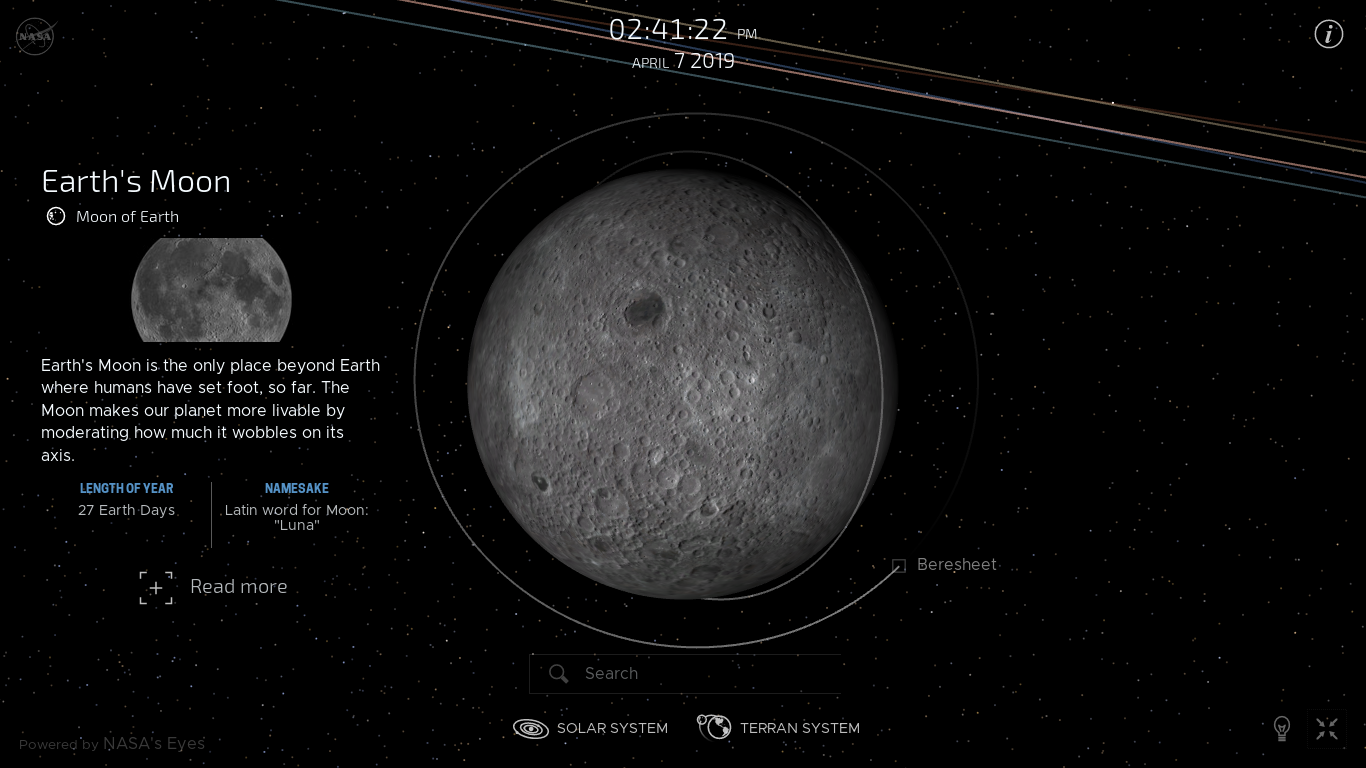
April 8, 2019 (new maneuvers to reduce orbit parameters):
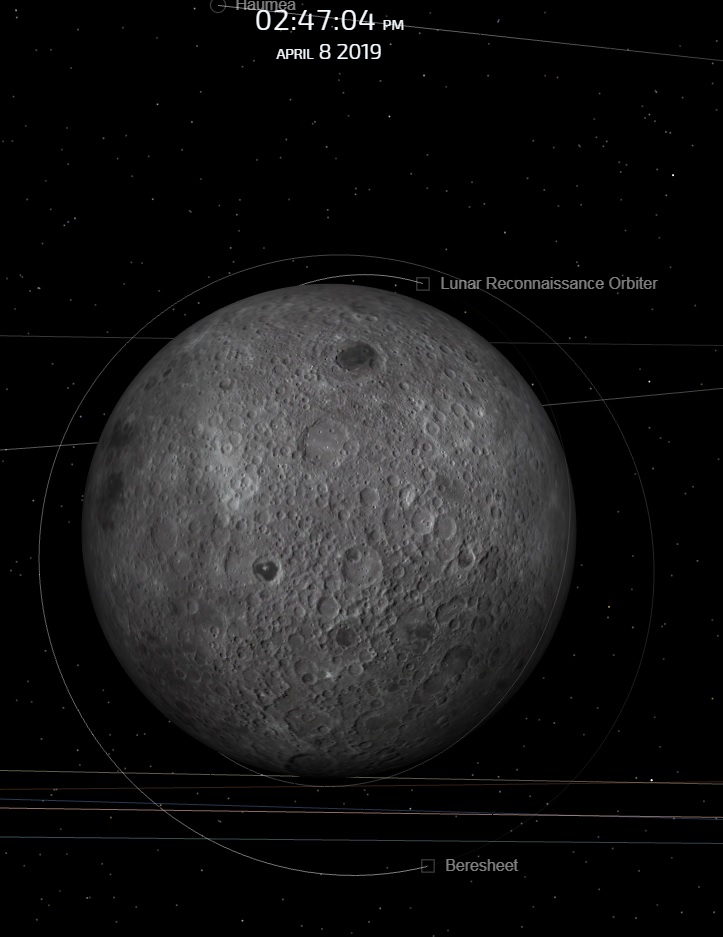
April 9, 2019 (new maneuvers were performed - access to a circular orbit with a height of 200 km above the surface and a period of revolution of 2 hours, engines were running for 78 seconds, 12 kilograms of fuel were spent):
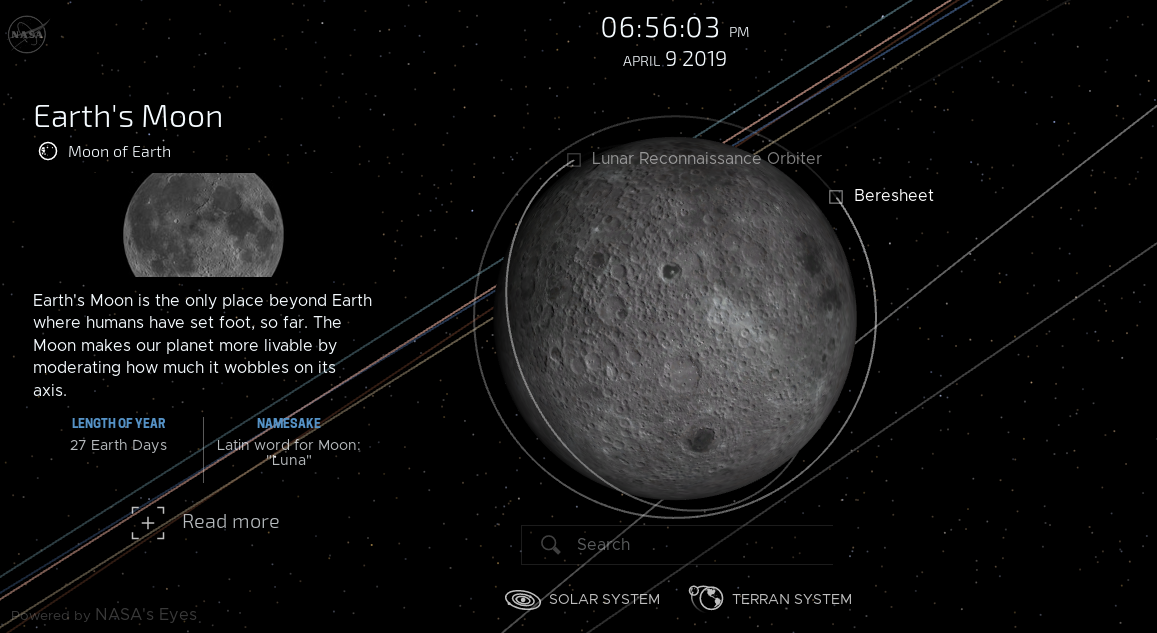
April 10, 2019 - the final pre-landing orbital maneuver was completed - access to an elliptical orbit with an apocenter 200 km and the pericenter of 15-17 km.

Everything, then only landing, because in the calculation of the landing area, the lunar day already begins!

The trajectory of the lunar maneuvers of the Bereshit apparatus:
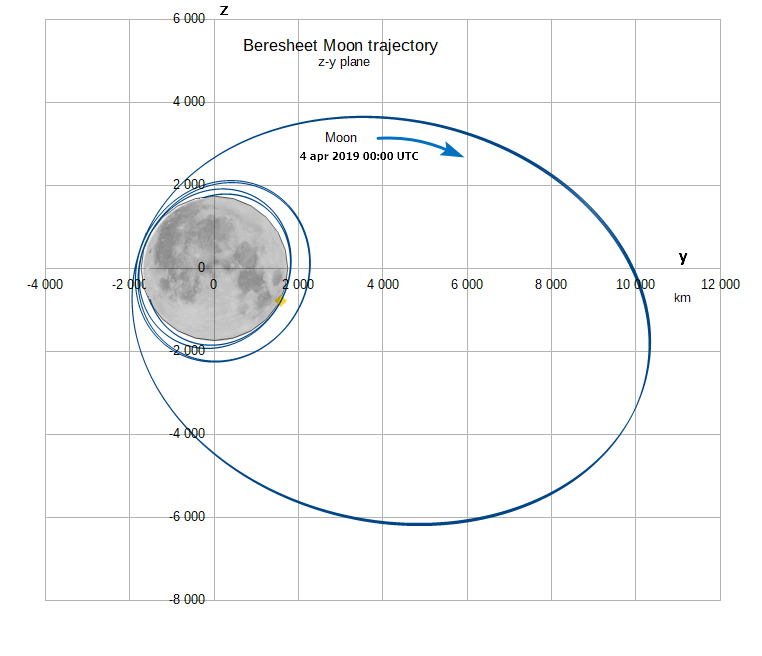

Landing map and LRO image with three specified Beresheet landing areas (Posidonius 1 - primary, Posidonius 2 and 3 - backup):

MCC SpaceIL and Israel Aerospace Industries (IAI):
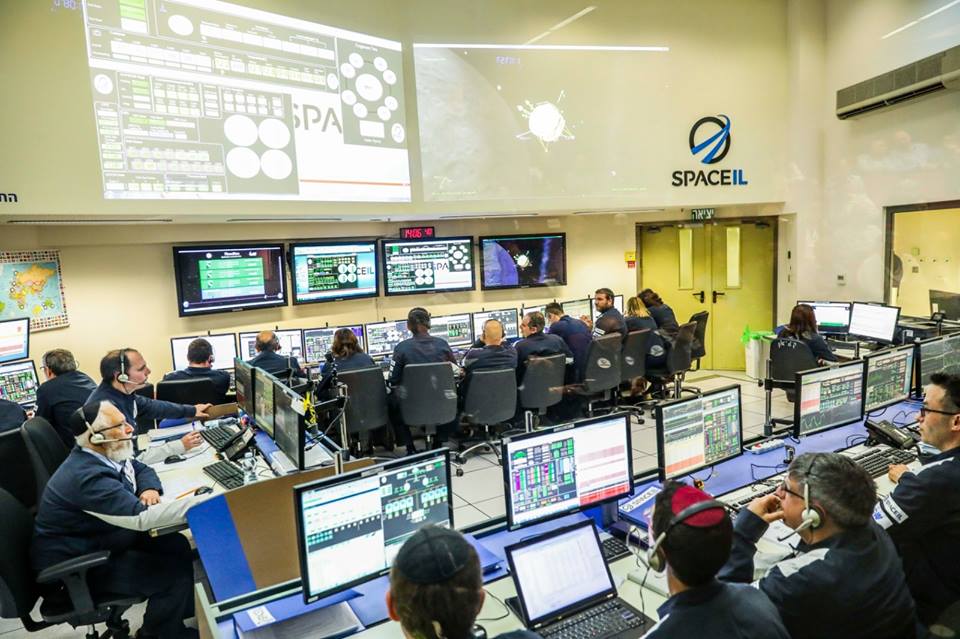
Now let's go back a bit and see how we created and tested the Bereshit device
How to assemble the Bereshit device:
About the pre-launch preparation of the Bereshit
apparatus Before the start, the Bereshit apparatus and its elements underwent many special tests: The
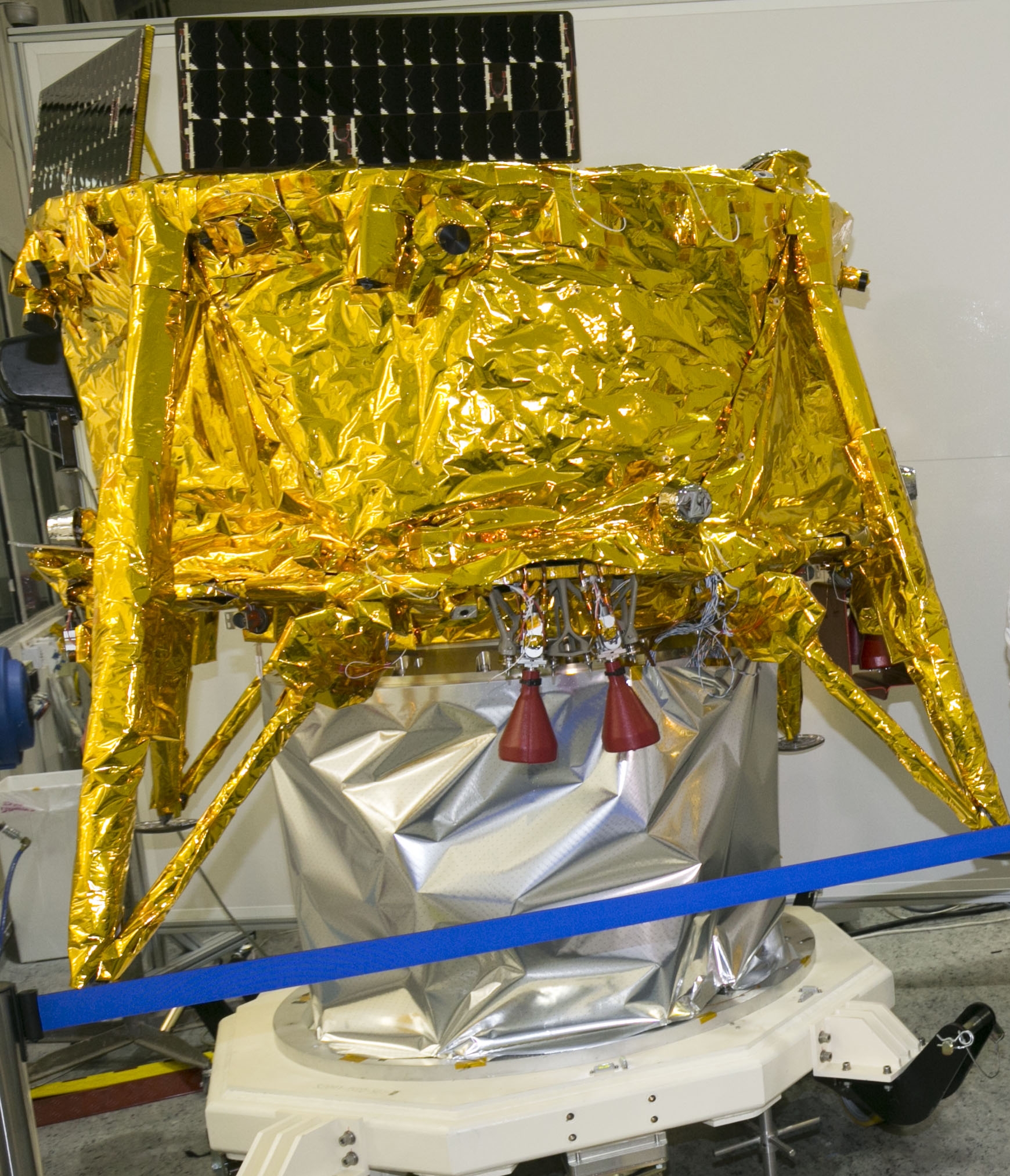
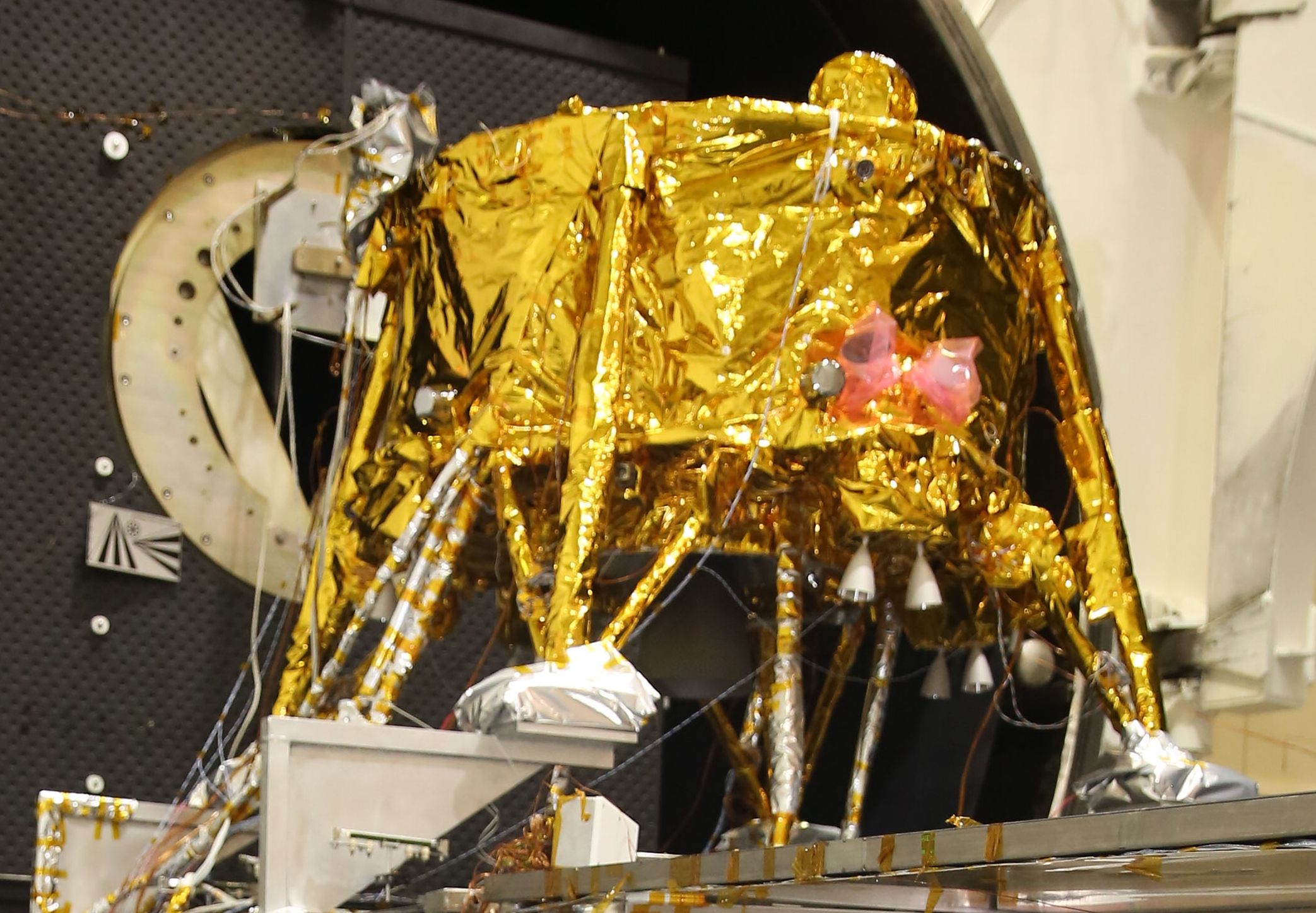
functionality of landing mechanisms was tested on the prototype apparatus.
Testing the supports and structure of the apparatus body in landing mode:
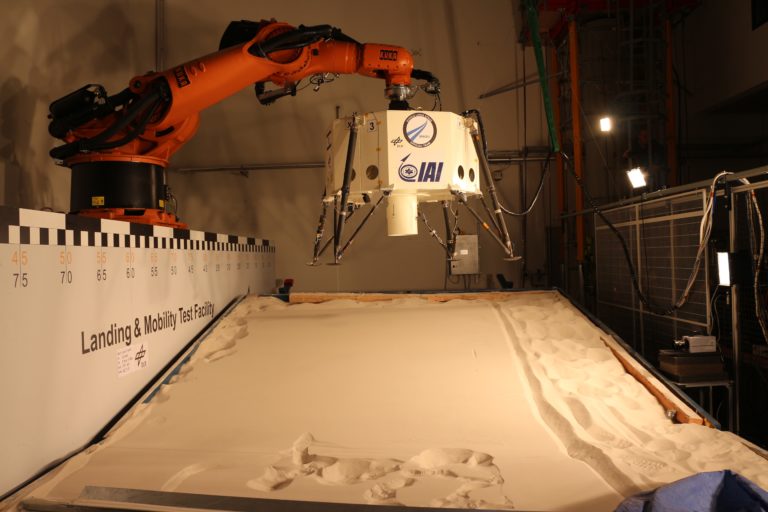
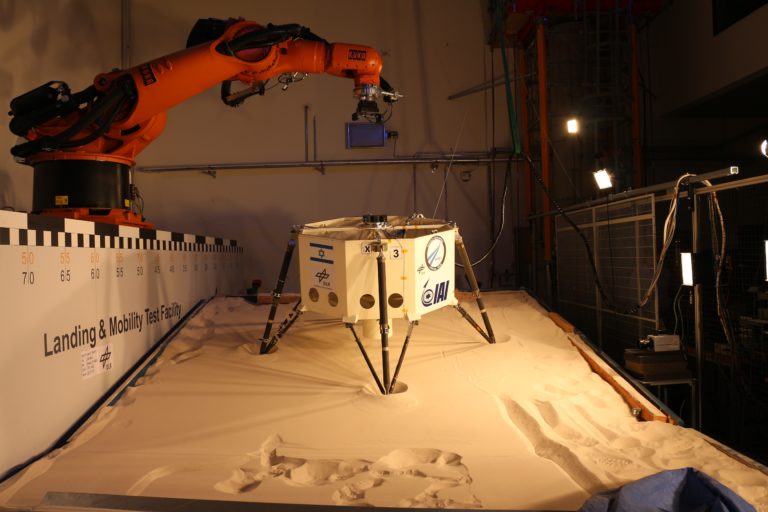
Temperature tests:


Vibration tests:

Altitude crane tests for dynamic testing of various sensors of the Bereshit device, including calibration and adjustment of the landing sensor:

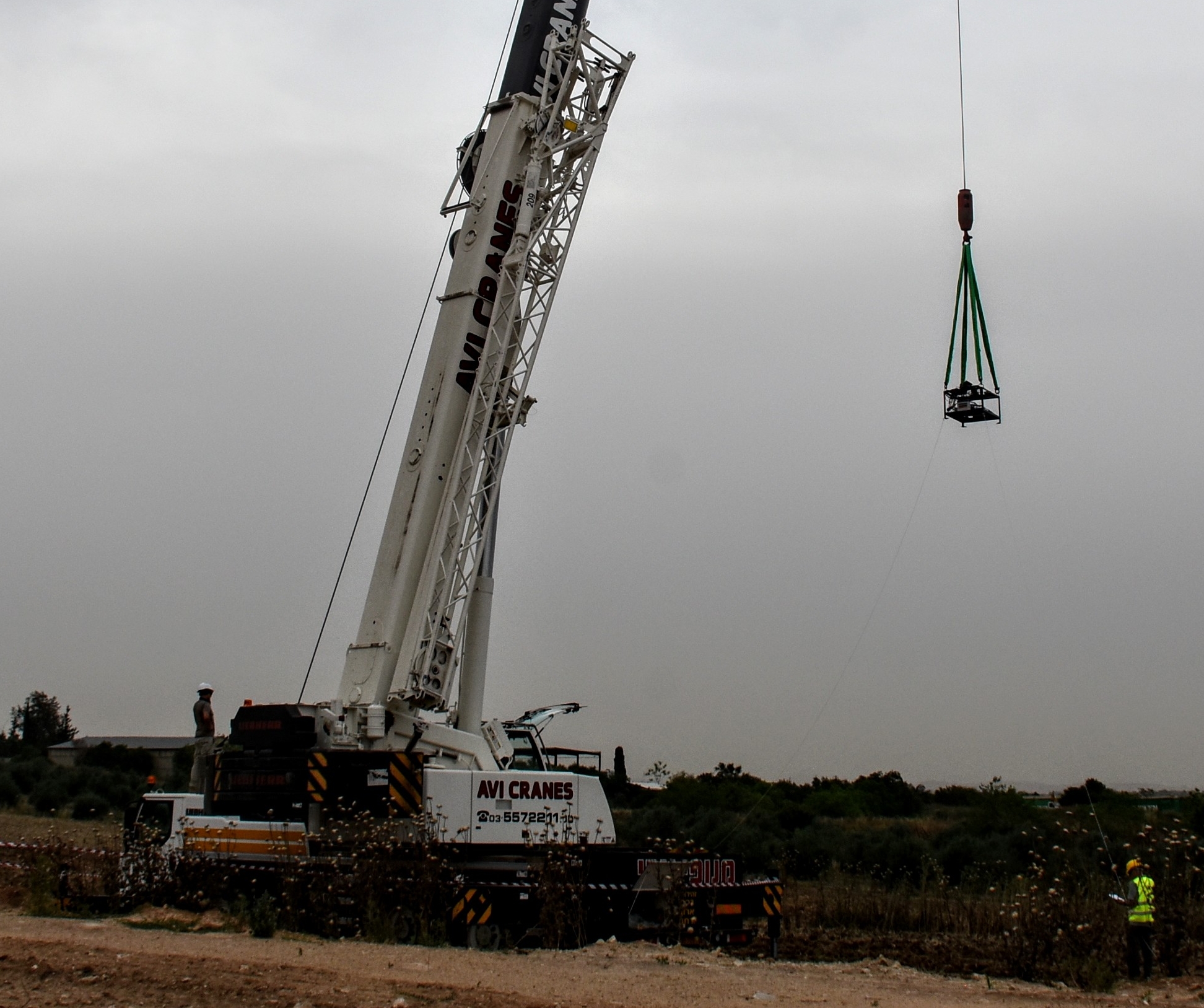
Complex tests for the perception of the device by Earthlings:
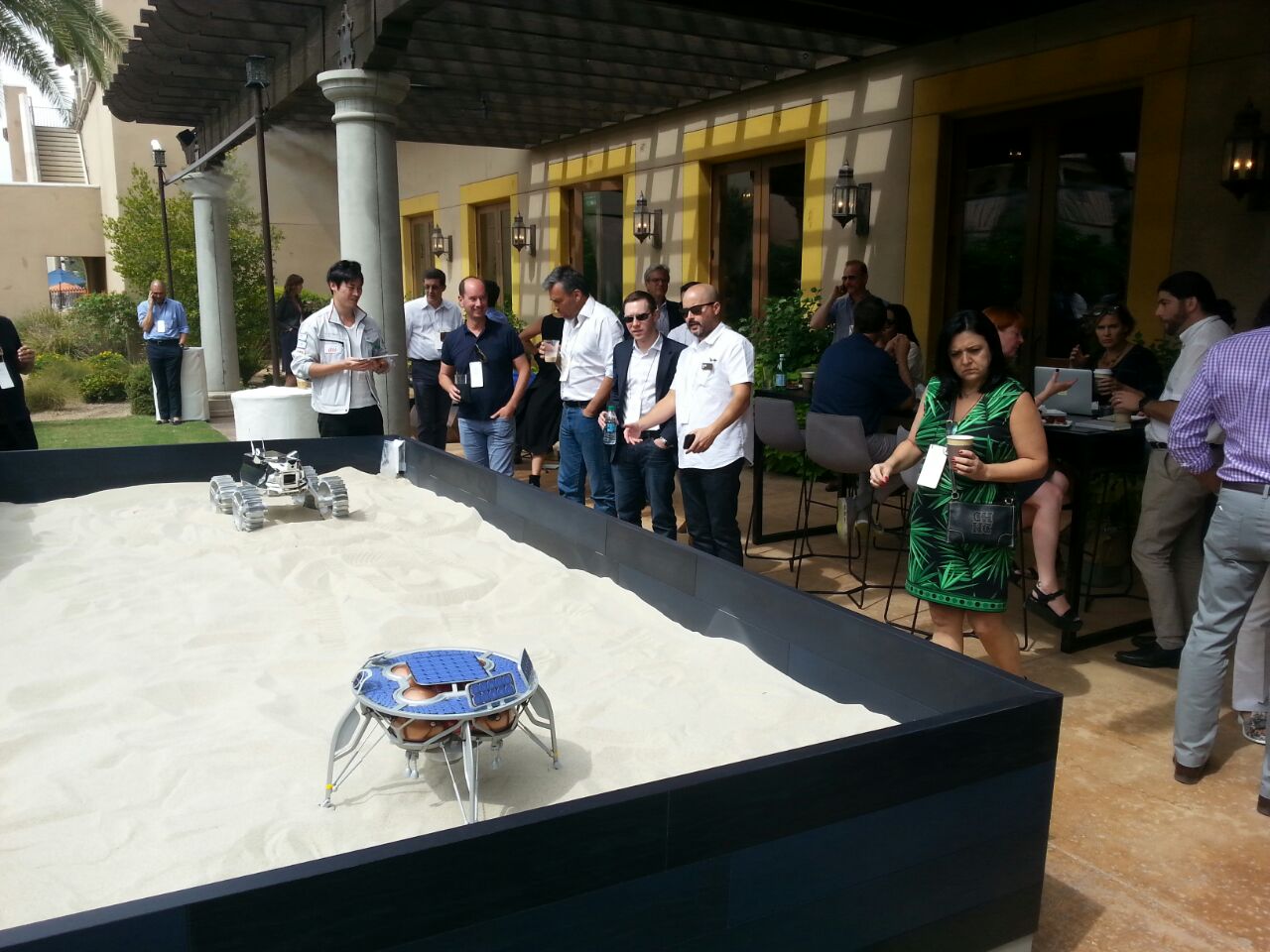
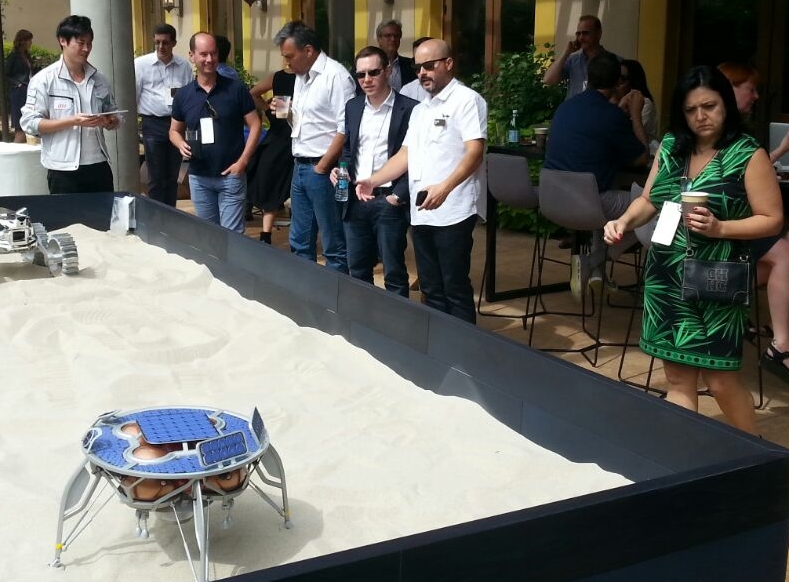
One of the most important parts of the device "Bereshit" - fuel tanks (together with fuel tanks in a percentage ratio make up 80% of the total mass of the device).
Temperature control sensors are connected to the strips on the top and bottom of the tanks, with the help of which the fuel condition is monitored, and the strips themselves are special heating elements for thermal control of the fuel, which are specially designed for the organization of SpaceIL and the Bereshit apparatus.
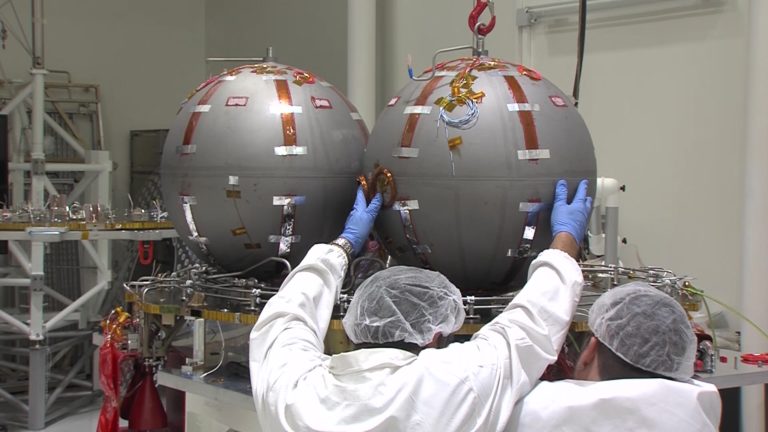

The Bereshit device takes photos of outer space with the help of six 8-megapixel Imperx Bobcat B3320C cameras with Ruda optics.
On board each camera:
- two video processors - for redundancy (in the event of a malfunction so that it can continue to work);
- a special lens that can function in harsh environmental conditions and the extreme temperature conditions prevailing on the moon: -120 ° C + 120 ° C.
The weight of the camera is ~ 130 grams, the camera body is made of titanium.
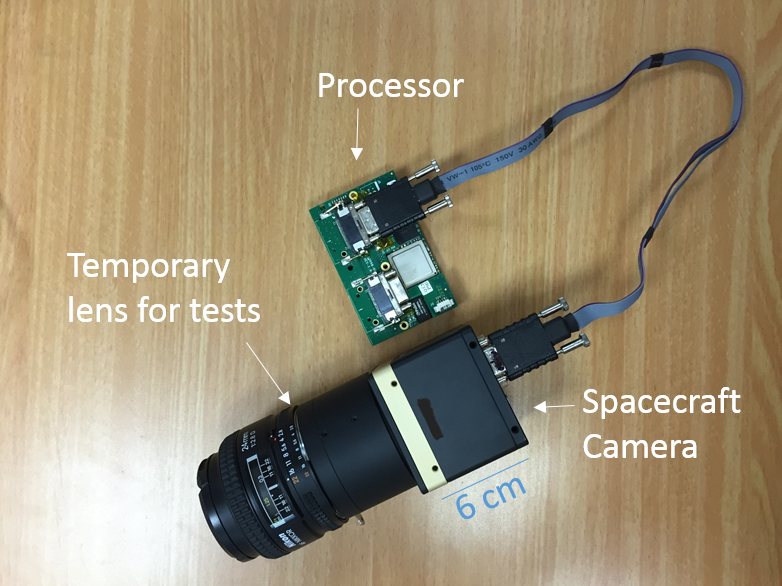
A book about the Bereshit apparatus was published even for young children : A



video tutorial for children about the Bereshit apparatus (it’s very interesting to watch without even understanding the language in the pictures):
Already there are T-shirts and caps with the symbols of the mission “Bereshit”:


And now about the landing of the device “Bereshit” on April 11, 2019:
Video about the landing procedure:
Немного об основных моментах посадки:
Поверхность Луны покрыта кратерами и имеет сложный рельеф:
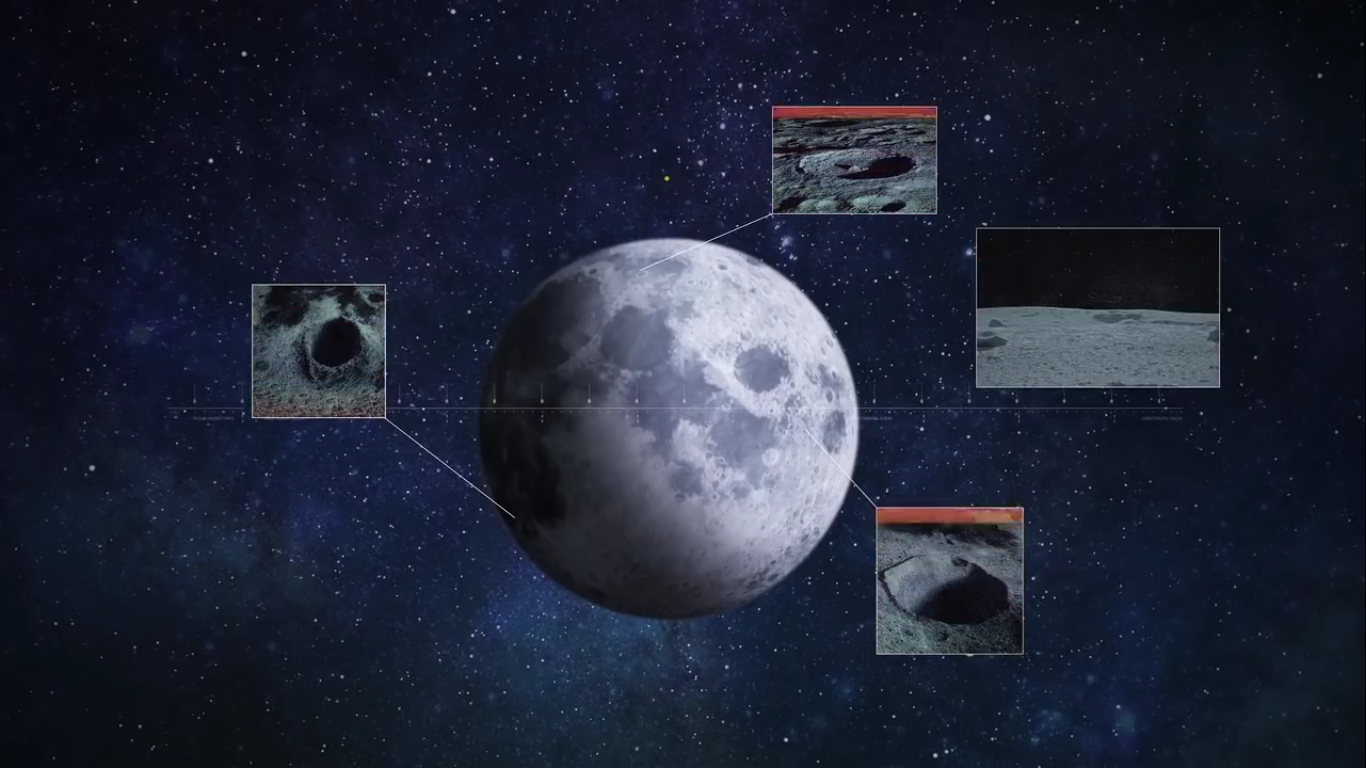
Для организации посадки аппарата «Берешит» нужно 30 кв.км относительно ровной поверхности.

11 апреля 2019 года в зоне посадки уже будет солнечно и светло:

Фактически, у аппарата «Берешит» будет 2-3 дня, пока не начнется пик солнечной активности в месте посадки:
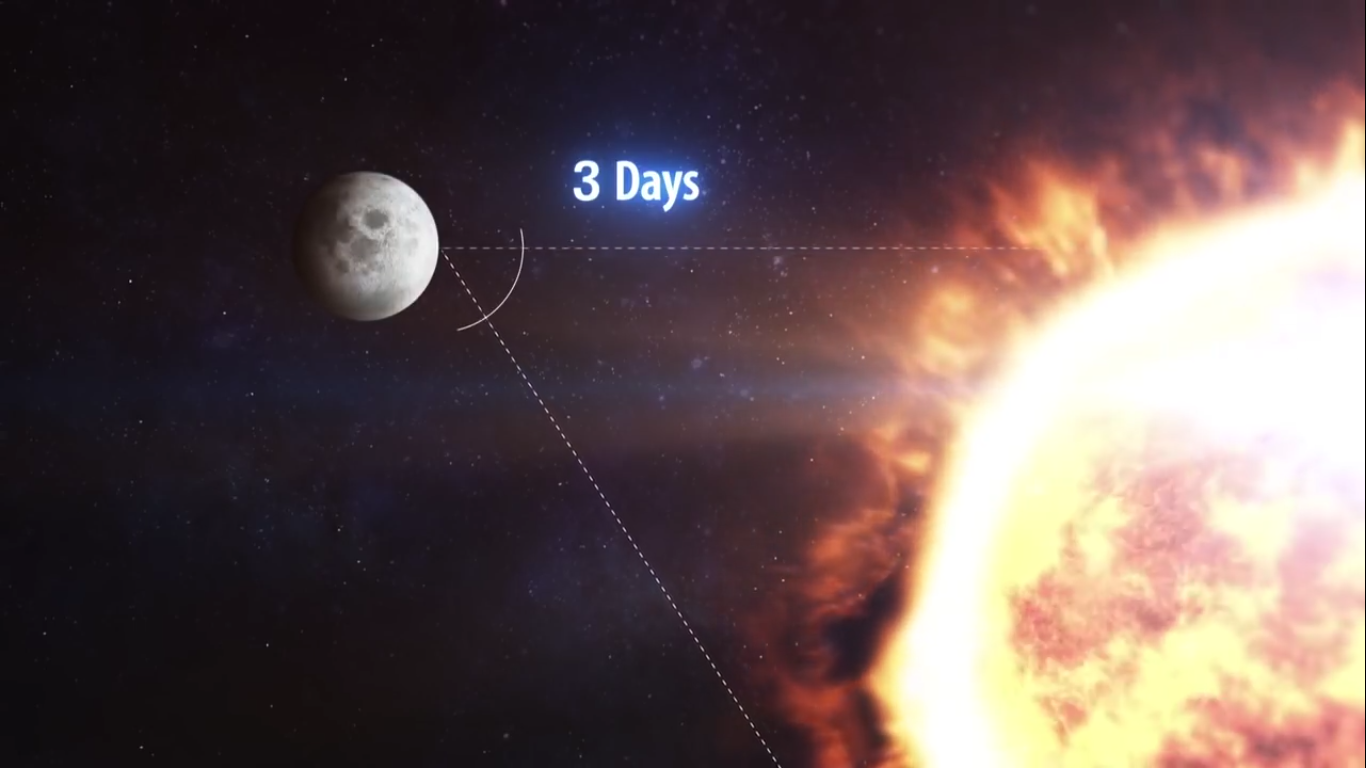
Финальная Лунная орбита аппарата «Берешит» эллиптическая с апоцентром 200 км и перицентром 15-17 км (до 30 км).

Скорость аппарата «Берешит» на орбите 1.7 км/с:

На расстоянии 800 км от места посадки начинаются посадочные процедуры:

Аппарат «Берешит» получит серию команд из ЦУП:
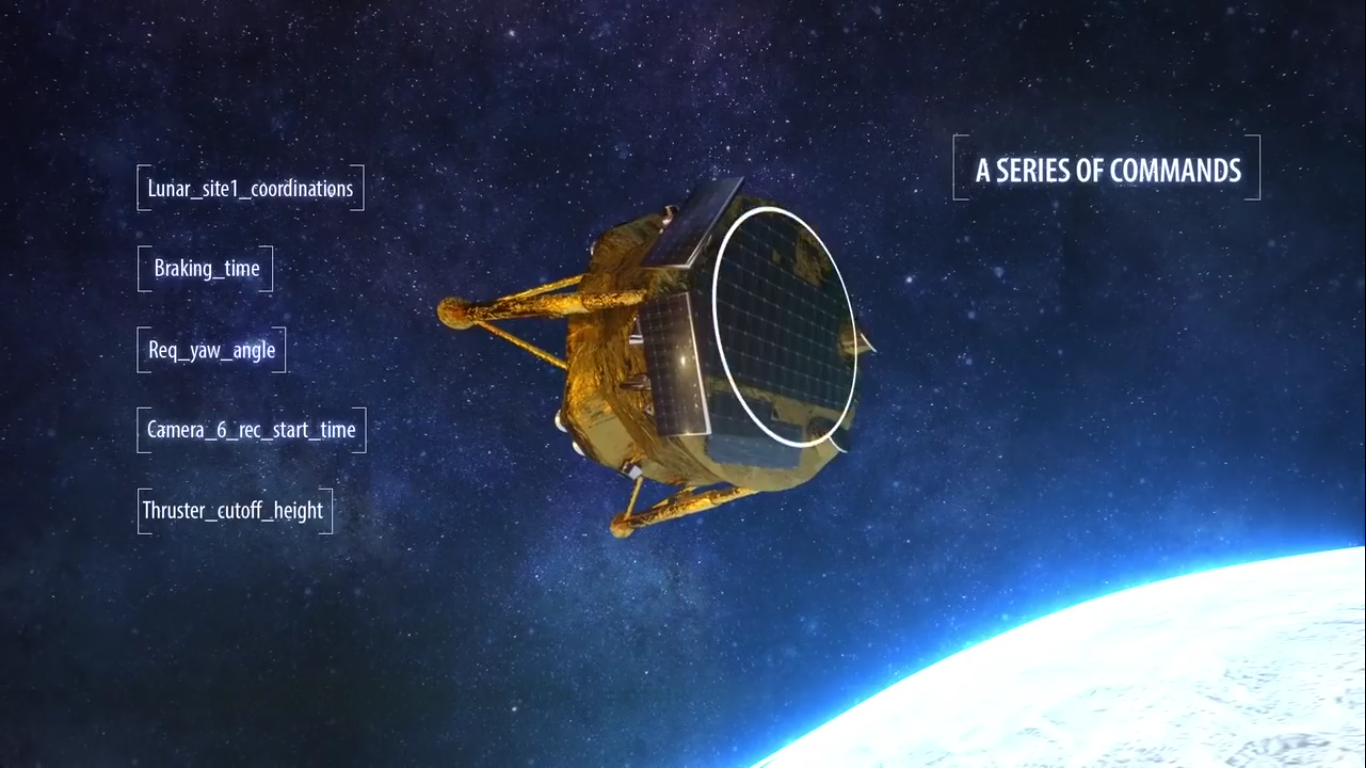
Будут активированы датчики посадки (основной и резервный):
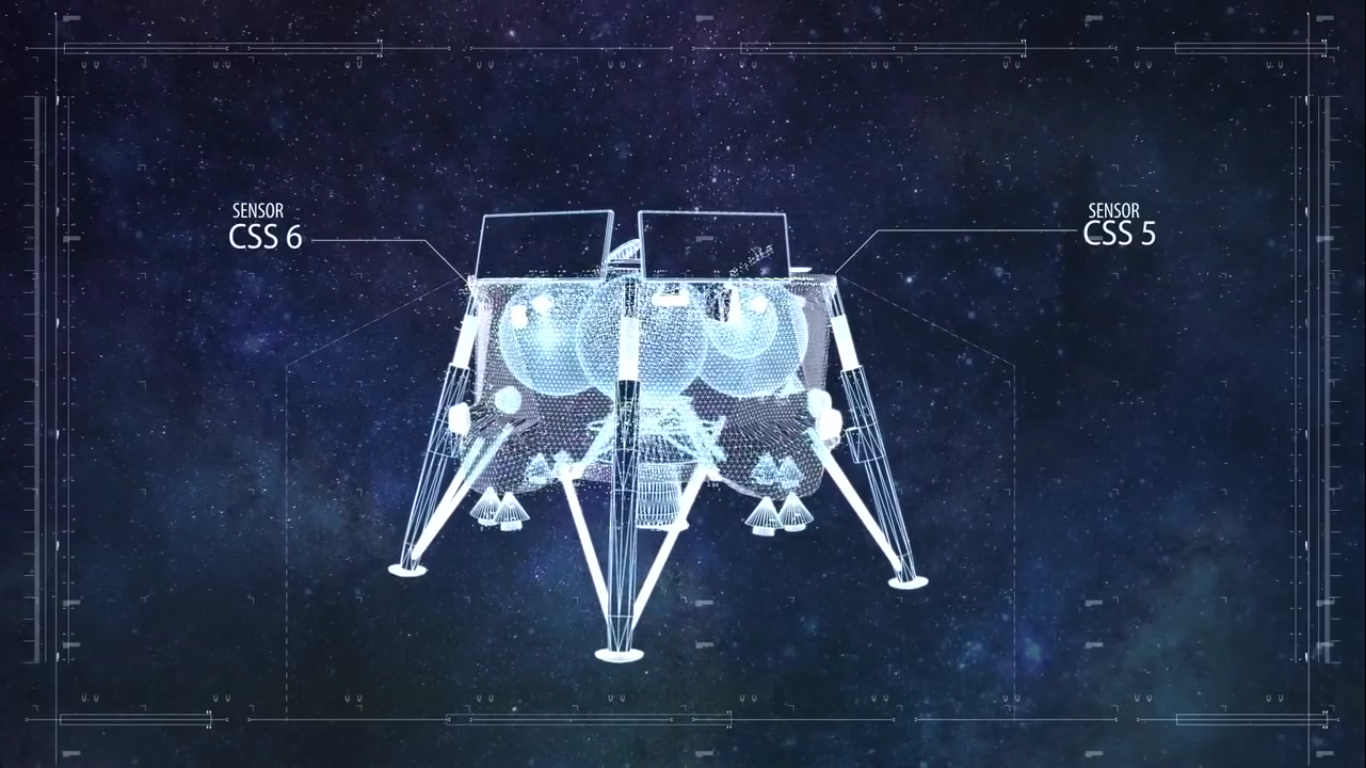

The procedure for changing the position (orientation) of the Bereshit apparatus will begin:
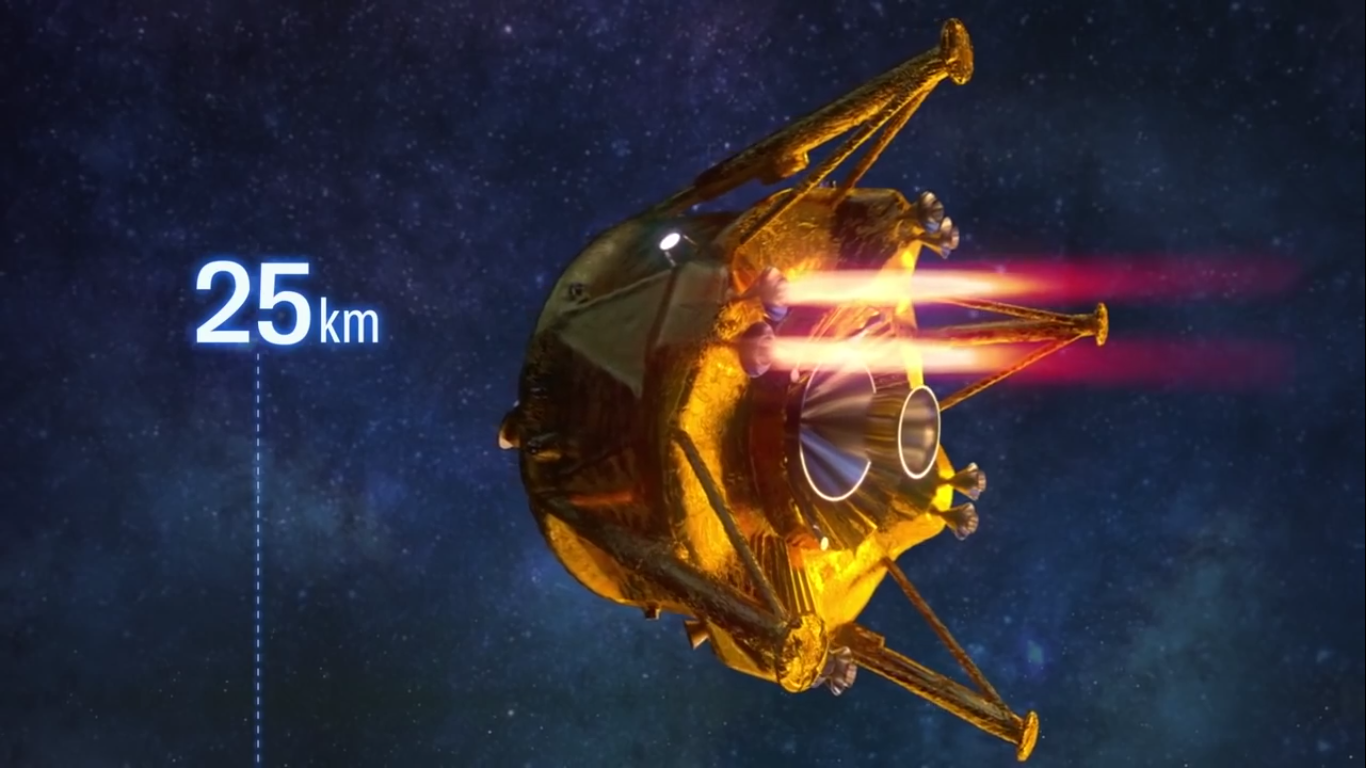
The process of stabilization and alignment of the position before landing is very important:

By the way, there is not much fuel left (estimated to be about 100 kg):

After the preparatory procedures are completed before landing, at the on-board computer “Bereshit” apparatus and the MCC will be able to assess the state of the systems and readiness for landing, if something does not work correctly, the landing procedure will be canceled, if everything is normal, then after the start of the next stage of landing the pain No cancellation can be done anymore:
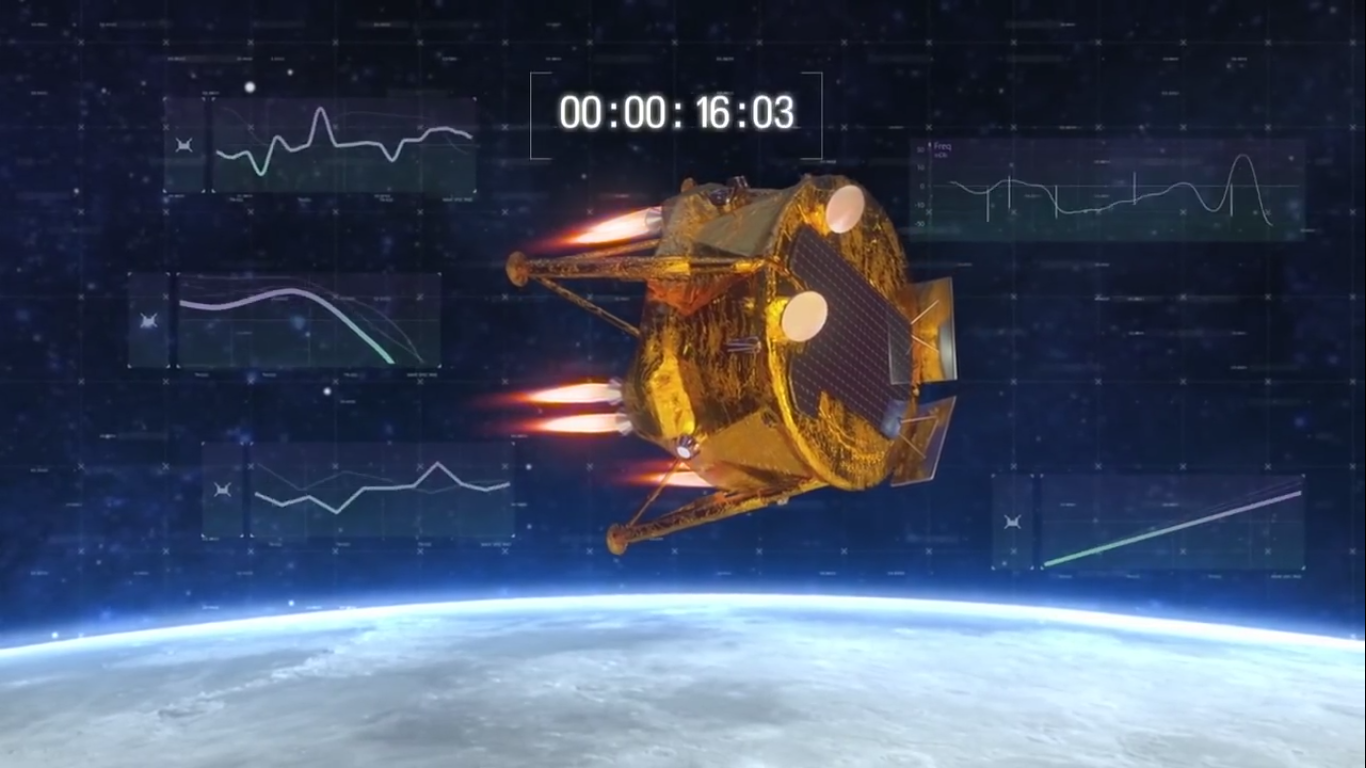
If everything is working properly, then the Bereshit apparatus will begin to reduce its orbital speed and reduce the distance to the lunar surface using the main and auxiliary engines, this procedure will take 15 minutes:



At an altitude of 5 km from the lunar surface, the Bereshit apparatus will measure using onboard laser distance to the surface to finalize the landing procedure according to the current parameters, adjust the maneuvers by the engines and proceed to the final landing phase:


At an altitude of 1 km, the “Ber "from the horizontal position (engines forward, braking) to the vertical position (engines below, braking, stopping, falling) and then decreasing to 5 meters from the lunar surface:



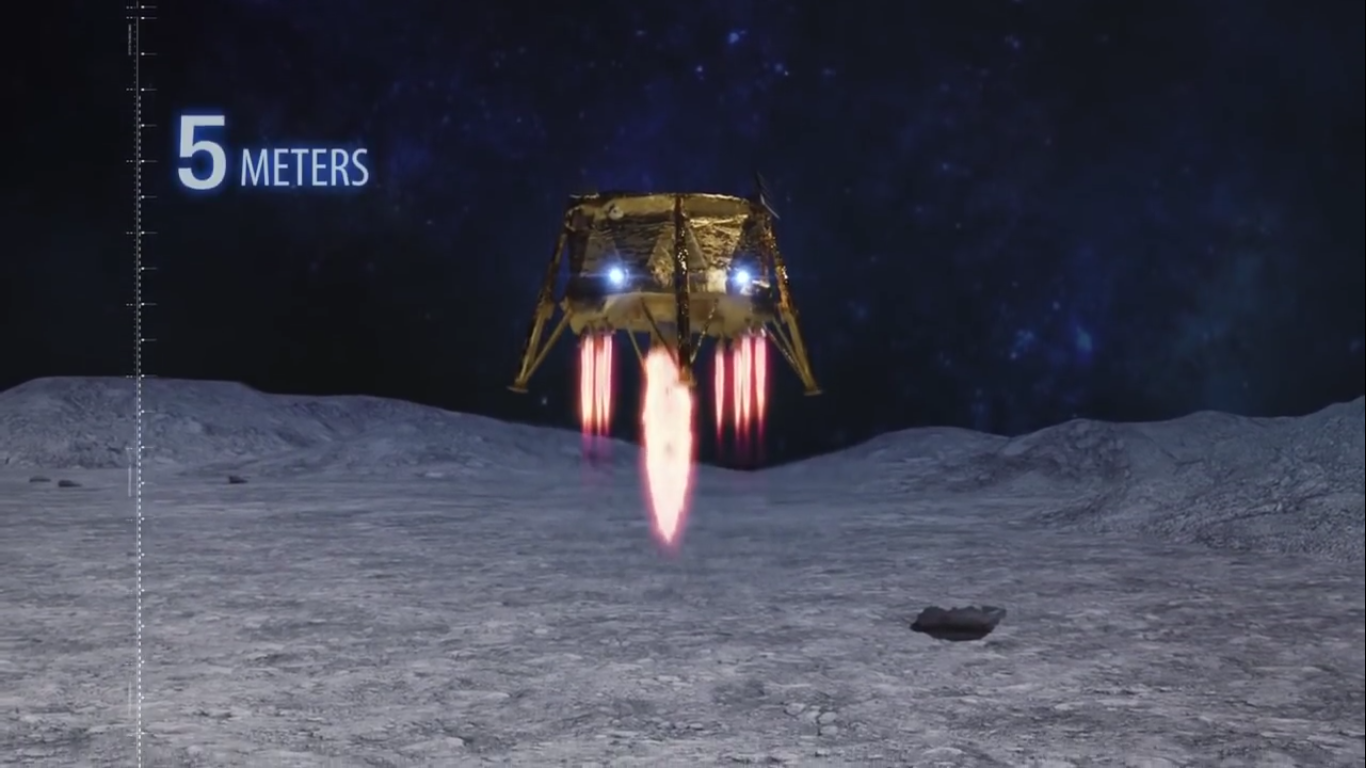
At an altitude of 5 meters from the surface of the moon, the engines of the Bereshit device will shut off and it will enter free fall mode, which will last 2-3 seconds:

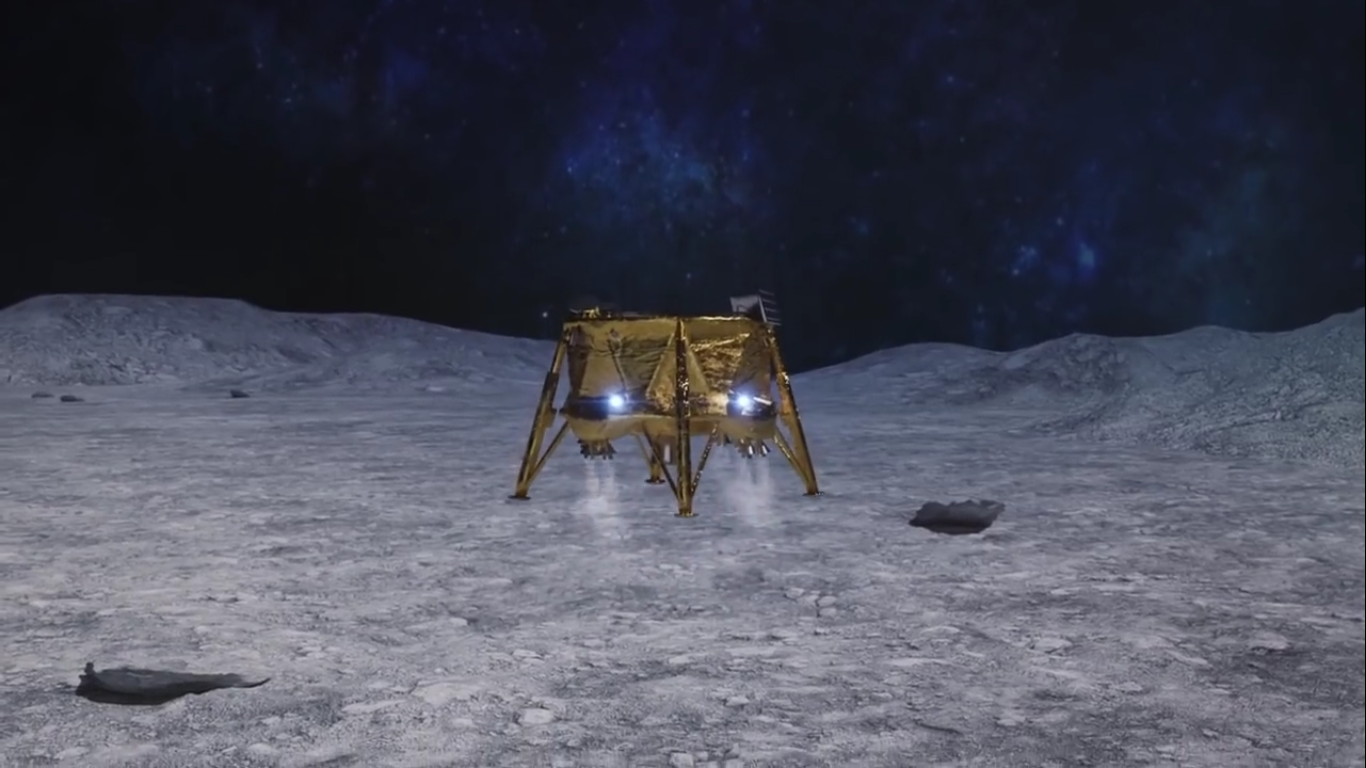
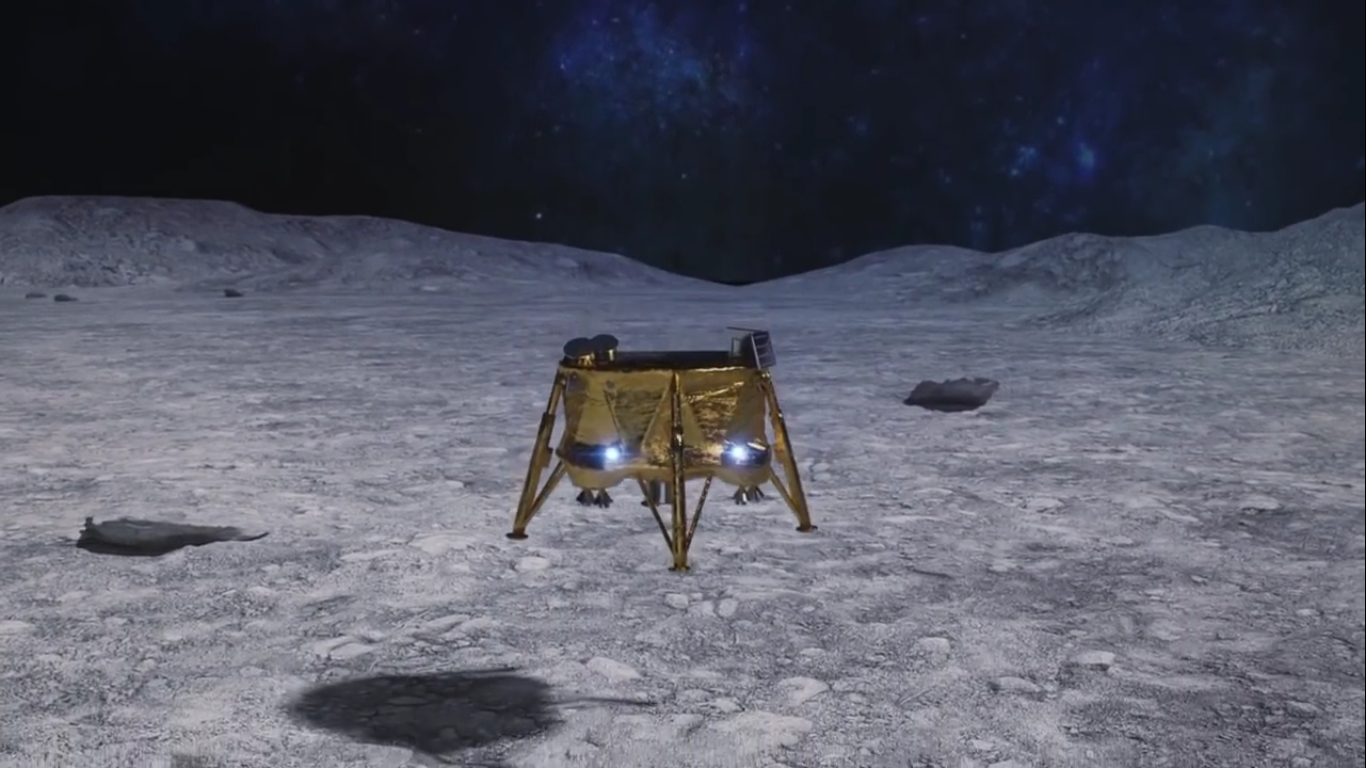
Landing of the Bereshit device on the surface of the moon:

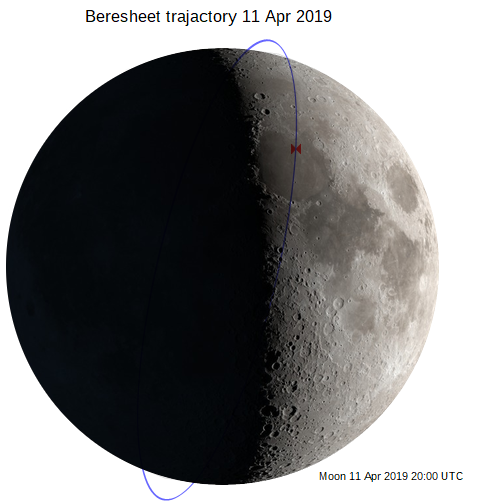
Evening on April 11, 2019 - behind 1128 flight hours, now everything 48 hours left to work and stay in touch with the Bereshit device on the lunar surface until its equipment crashes.
The Bereshit device has no thermal protection and cooling systems, the estimated operating time on the lunar surface is about two Earth days (maximum three days), then its electronics will fail due to overheating, the connection with the device will be lost, and it will become a new lunar monument in the Sea of Clarity, next to Lunokhod-2 (Luna-21 missions) and Apollo 17 mission modules.
About communication system:
SpaceIL does not have its own space communication center, so the organization of data transfer between the MCC on Earth and the Bereshit device in space is a complex process that involves:
- the antenna network of the Swedish Space Corporation, thanks to which the device “ Bereshit ”transmitted navigation commands and tracked its trajectory to the moon;
- NASA's long-distance space communications network (DSN) to control the Bereshit spacecraft and transfer scientific data from the spacecraft to the Earth after it landed on the moon.
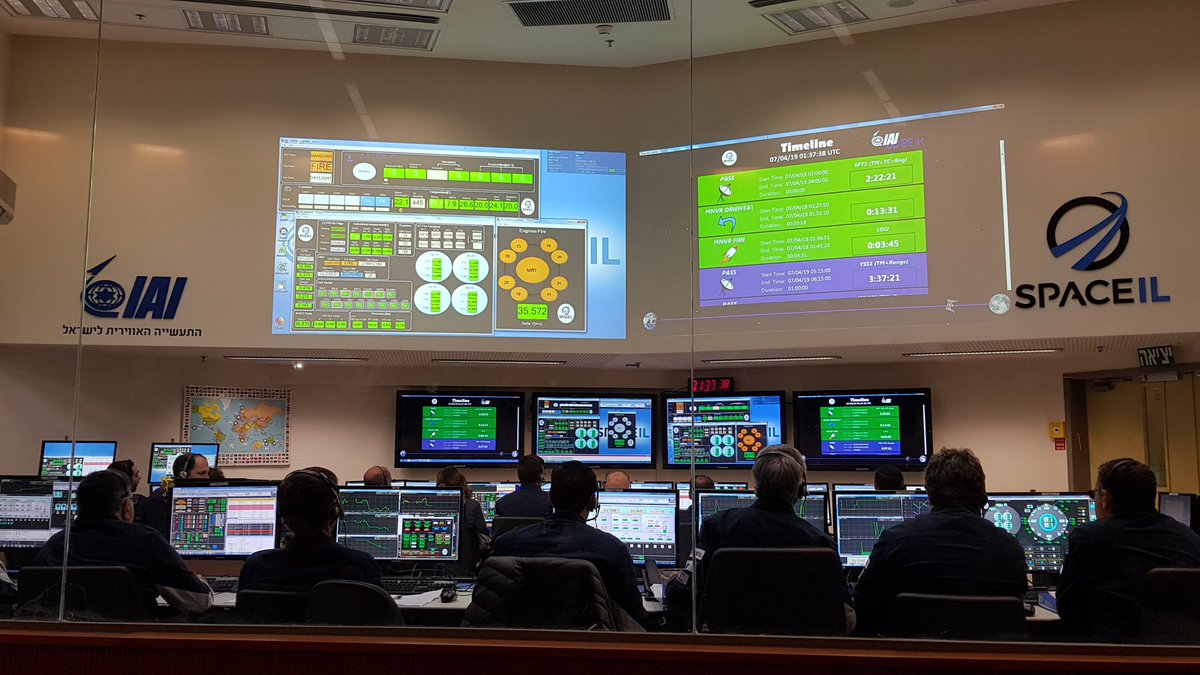
DSN is a network of radio telescopes and a system of dozens of huge antennas for communication with spacecraft in deep space, it is managed by the NASA Jet Propulsion Laboratory in Pasadena (California).
At the moment, several DSN antennas are involved in the communication system with the Bereshit device.
Landing April 11, 2019.
On April 11, 2019, SpaceIL MCC did not push through. Although the landing is scheduled for the evening, the interest and excitement from the press and scientists, as well as everyone who was involved in this project, is simply huge.
The landing time of the Bereshit apparatus on April 11, 2019 is still being specified by engineers at the MCC (the landing time will be updated after the Flight Dynamics team makes the final calculations on Thursday morning) and will be known only on Thursday closer to dinner, but there are 2 milestones at the landing :
- The landing time window is approximately equal to the hour: The estimated landing time is currently scheduled between 22: 00-23: 00 Israeli time;
- 30 minute landing procedure window: The landing process will start 30 minutes before touchdown.
Closer to April 11, it was even stated that there were four landing windows between 5 AM and 6 PM local time, even the possibility of landing in the early hours of the night of April 12 was even considered. What
time will it land in different parts of the world:
05: 00-06: 00 on Friday, April 12 in Sydney
04: 00-05: 00 on Friday, April 12 in Tokyo
02: 00-03: 00 on Friday, April 12 in Bangkok
03: 00-04: 00 on Friday, April 12 in Beijing, Hong Kong
12: 30-01: 30 on Friday, April 12 in Mumbai
22: 00-23: 00 on Thursday, April 11 in Jerusalem and Moscow
21 : 00-22: 00 on Thursday, April 11 in Paris, Johannesburg, Cairo
20: 00-21: 00 on Thursday, April 11 in London, Dublin
16: 00-17: 00 on Thursday, April 11 in Rio de Janeiro
15: 00-16: 00 on Thursday, April 11 in New York
14:00 -15: 00 on Thursday, April 11 in Chicago
13: 00-14: 00 on Thursday, April 11 in Salt Lake City
12: 00-13: 00 on Thursday, April 11 in Phoenix, Los Angeles, San Francisco
As a result, On the afternoon of April 11, 2019, the SpaceIL MCC decided on the landing time:
- 22:05 Moscow time - the beginning of the landing procedure;
- 22:25 Moscow time - landing (touch of all supports) on the lunar surface.

I see this for the first time (the Israeli airport management on Thursday included in its electronic schedule at 22:00 the Bereshit apparatus):
Online display of Tel Aviv airportBen Gurion (TLV):
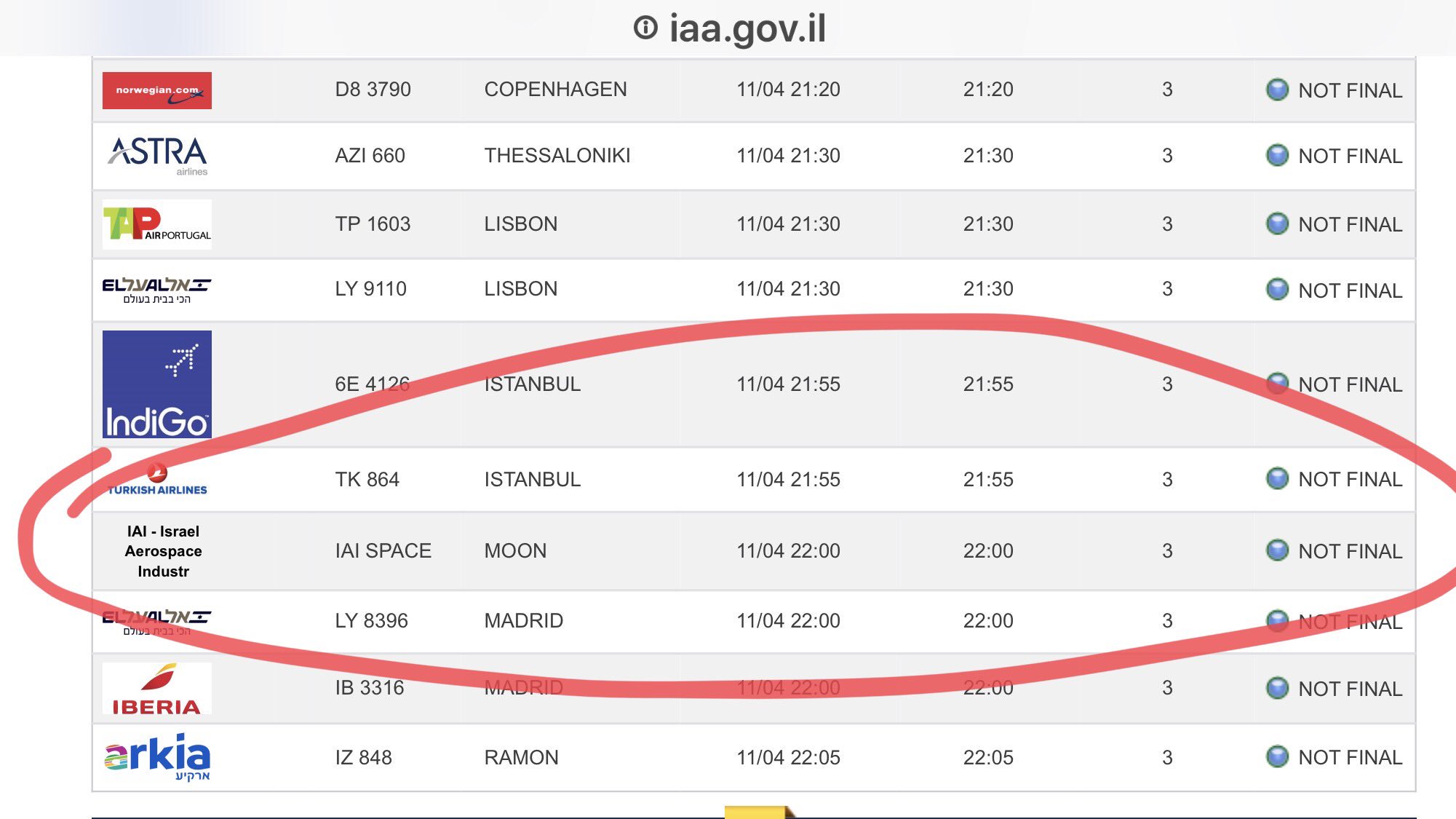
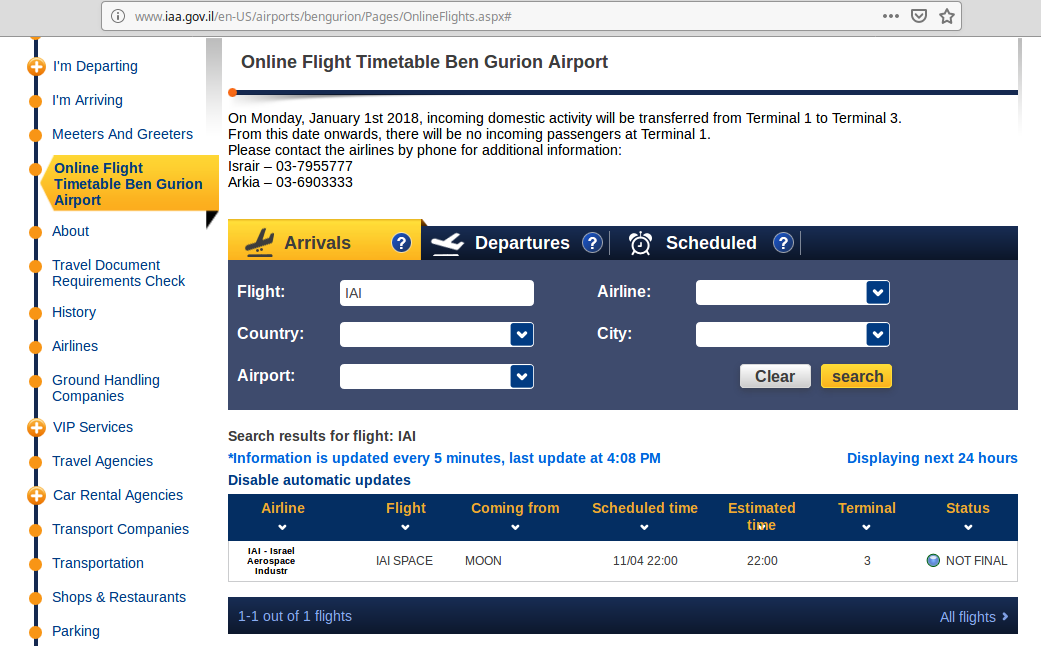
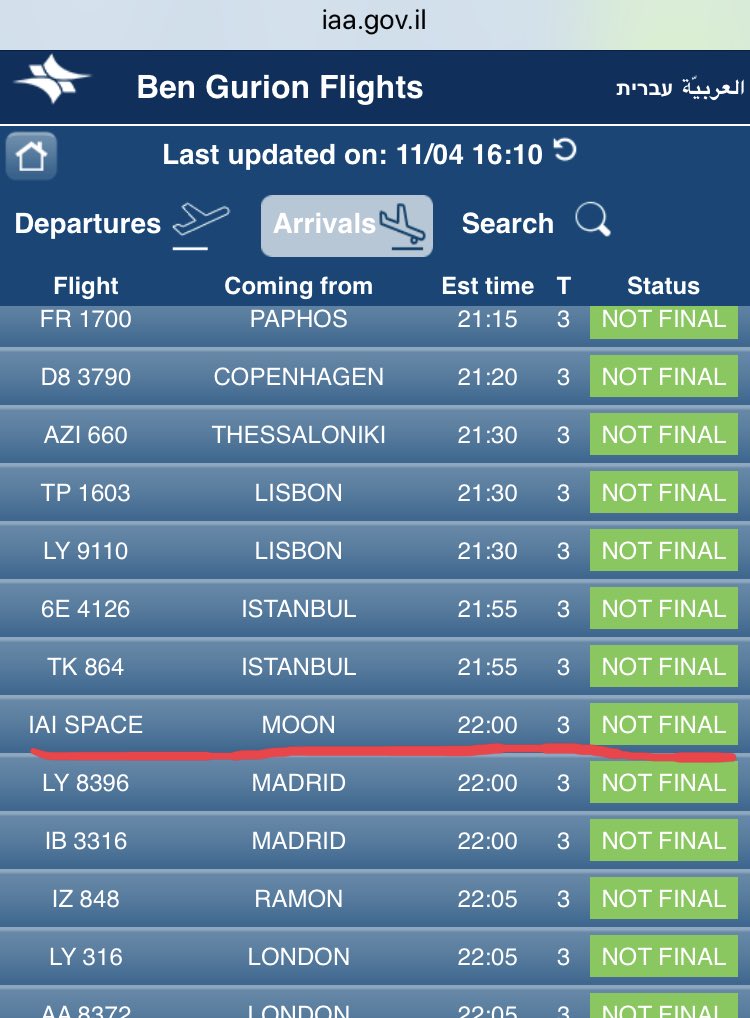

Expected temperature on the lunar surface: + 80 ° C to + 120 ° C.

The MCC prepared for landing, checking the landing procedures:

Another round around the moon and then landing approach.
Span over the landing site:
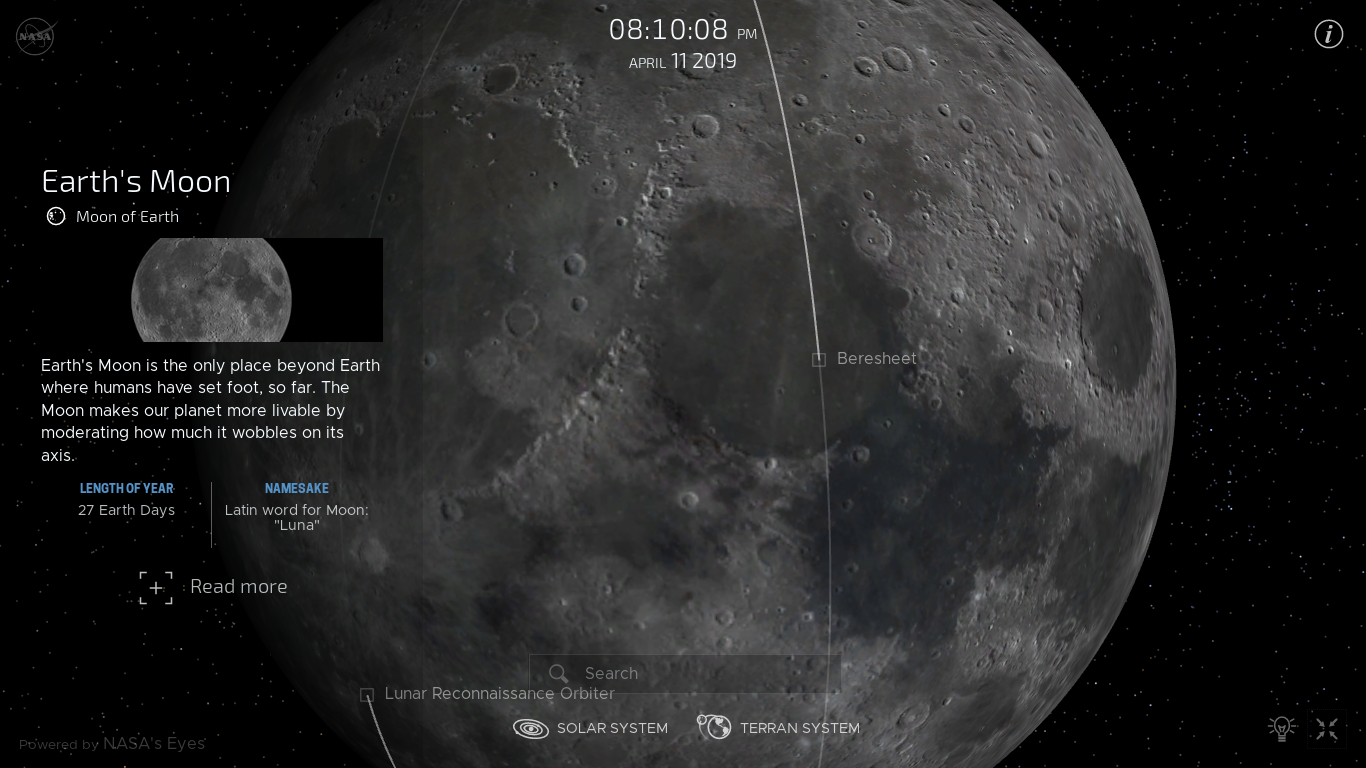
Everything, the next round - for landing:
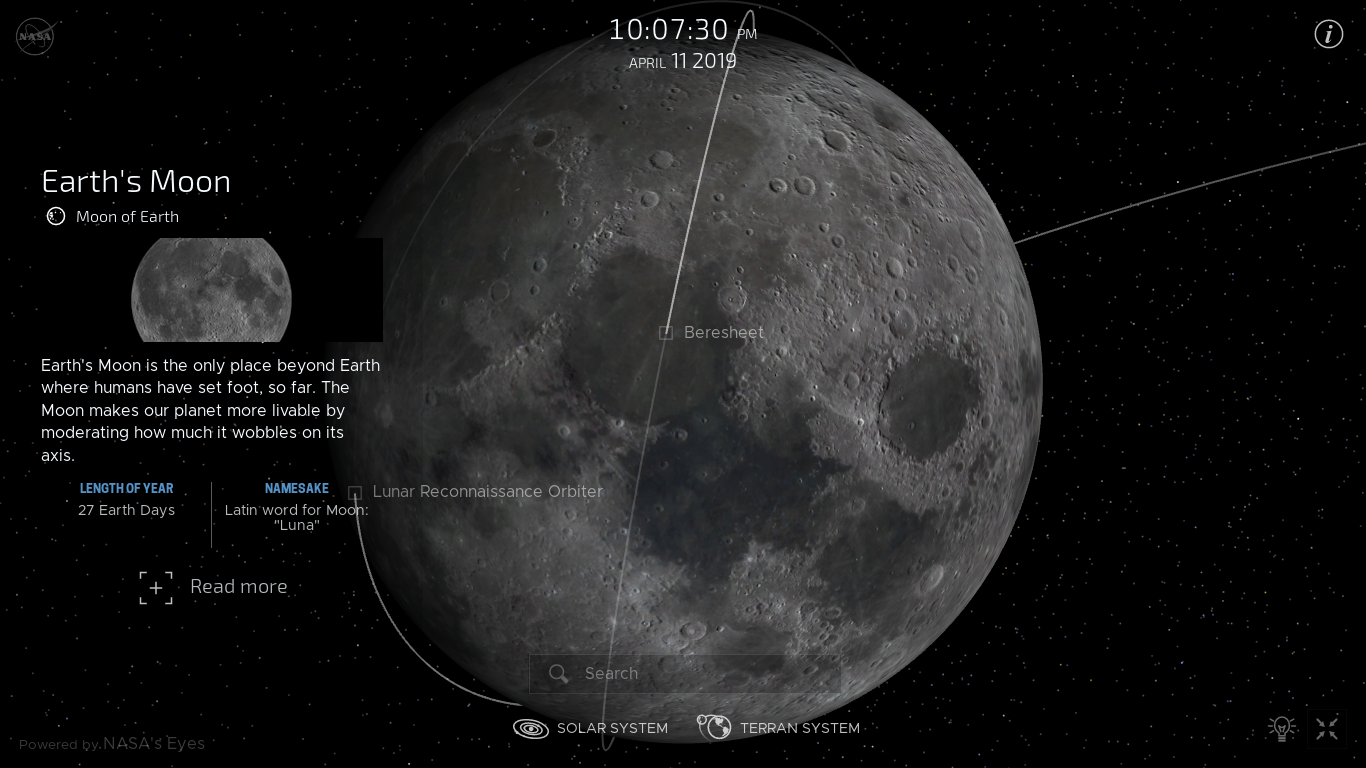
2 hours before landing at SpaceIL MCC:

Engineers' mascots are also on duty at SpaceIL MCC:
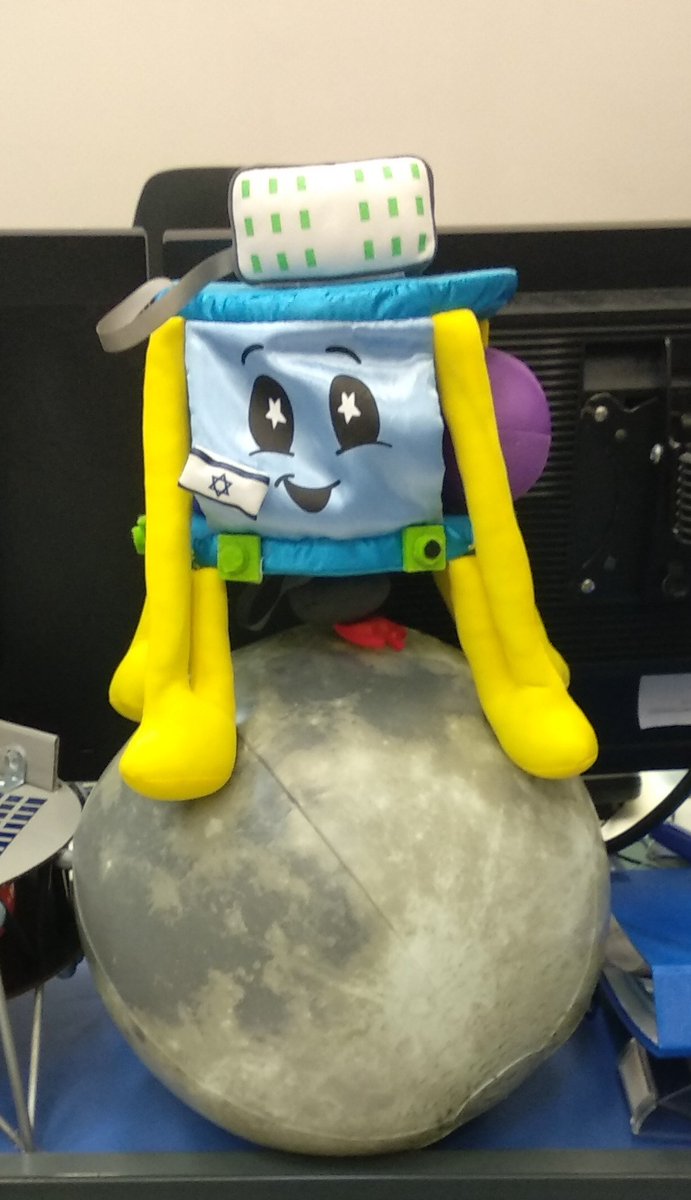


Project founders:

Everything is ready at the MCC:
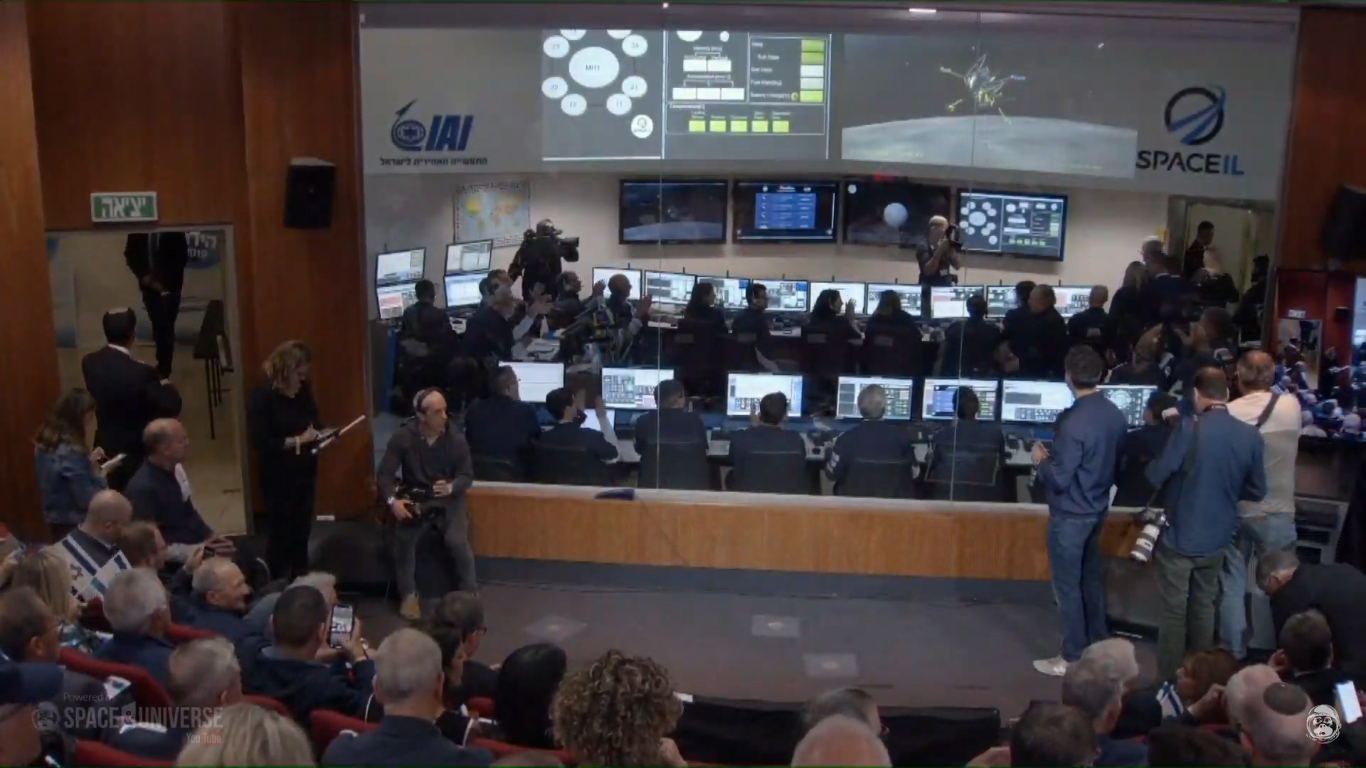
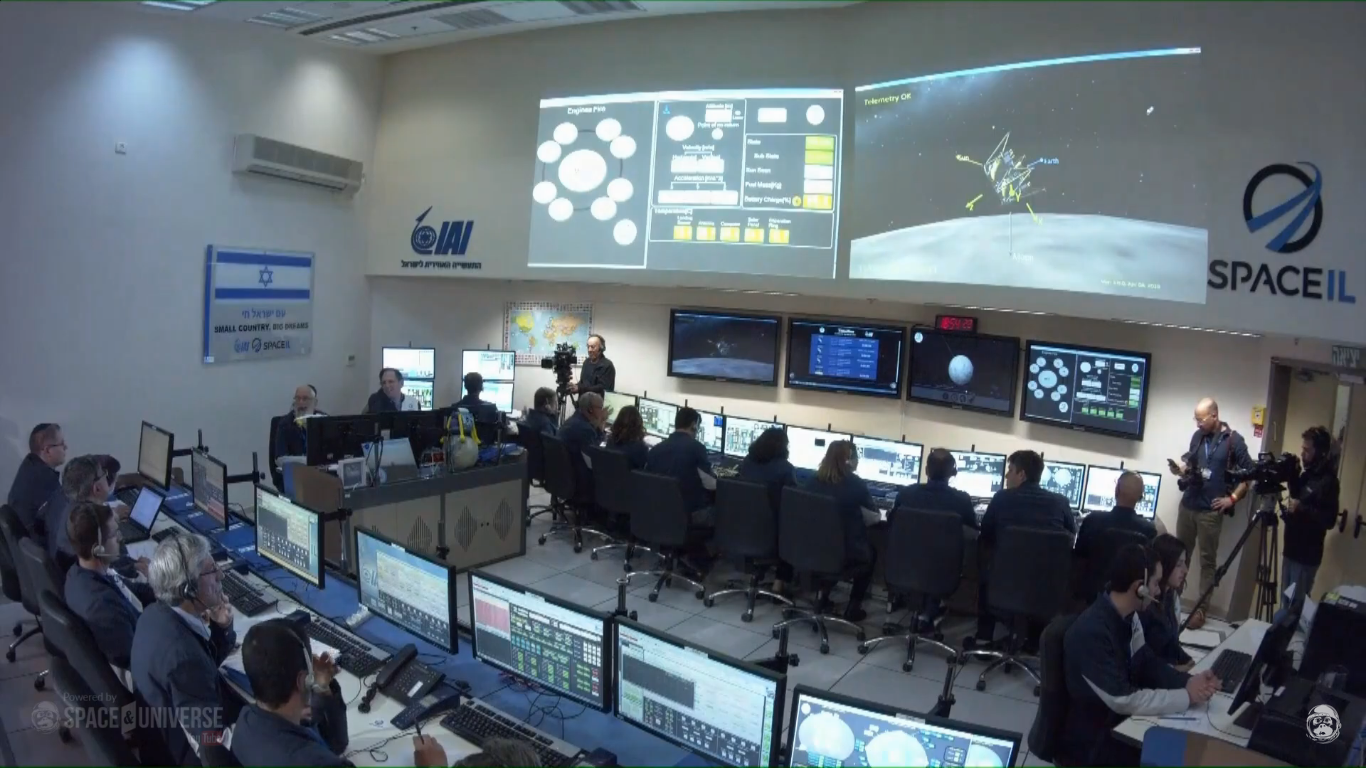

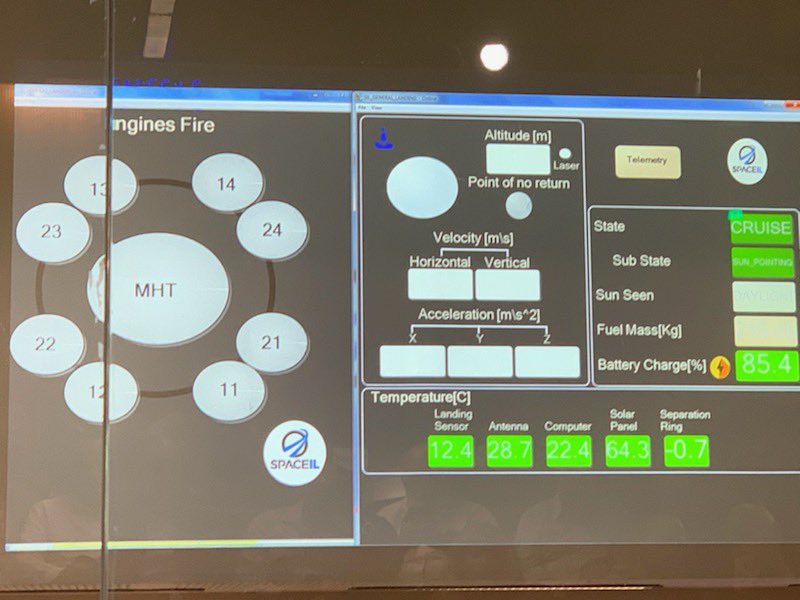
Landing phase has begun:
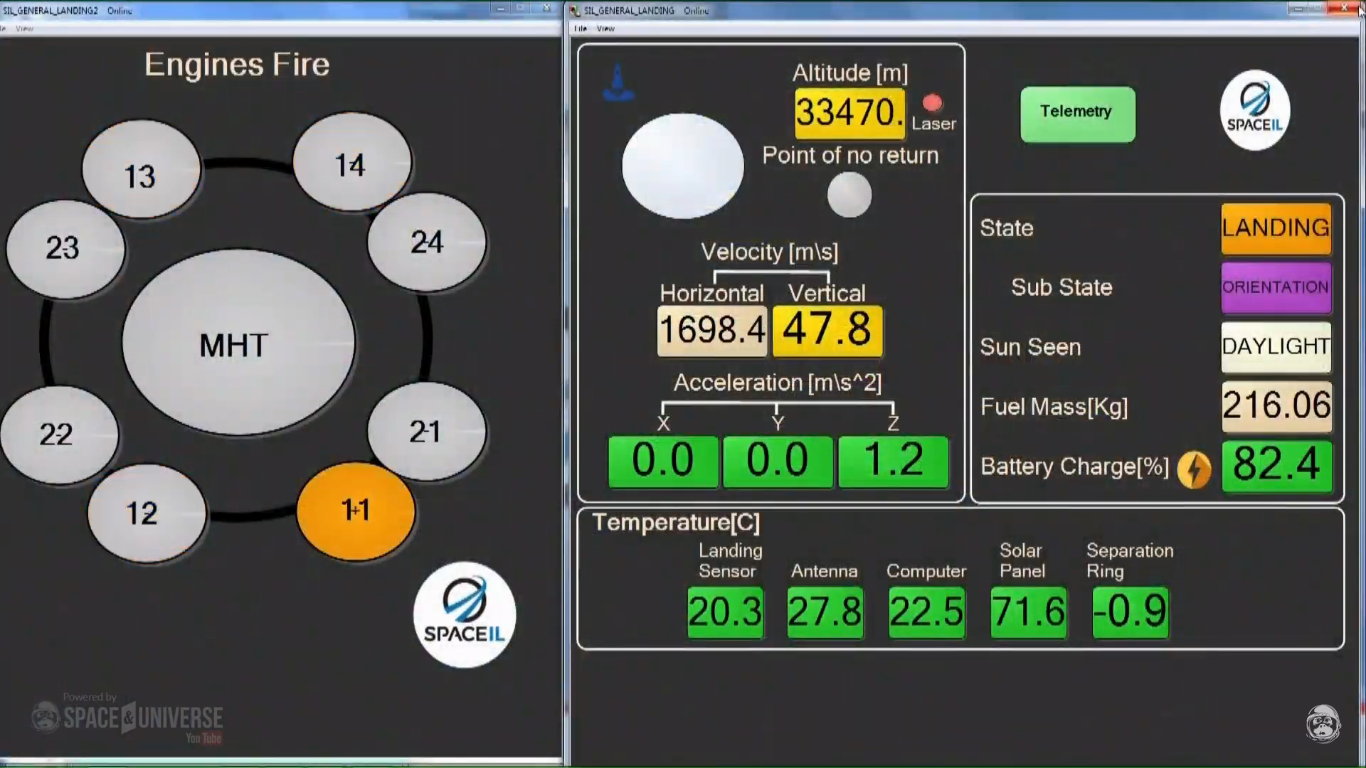
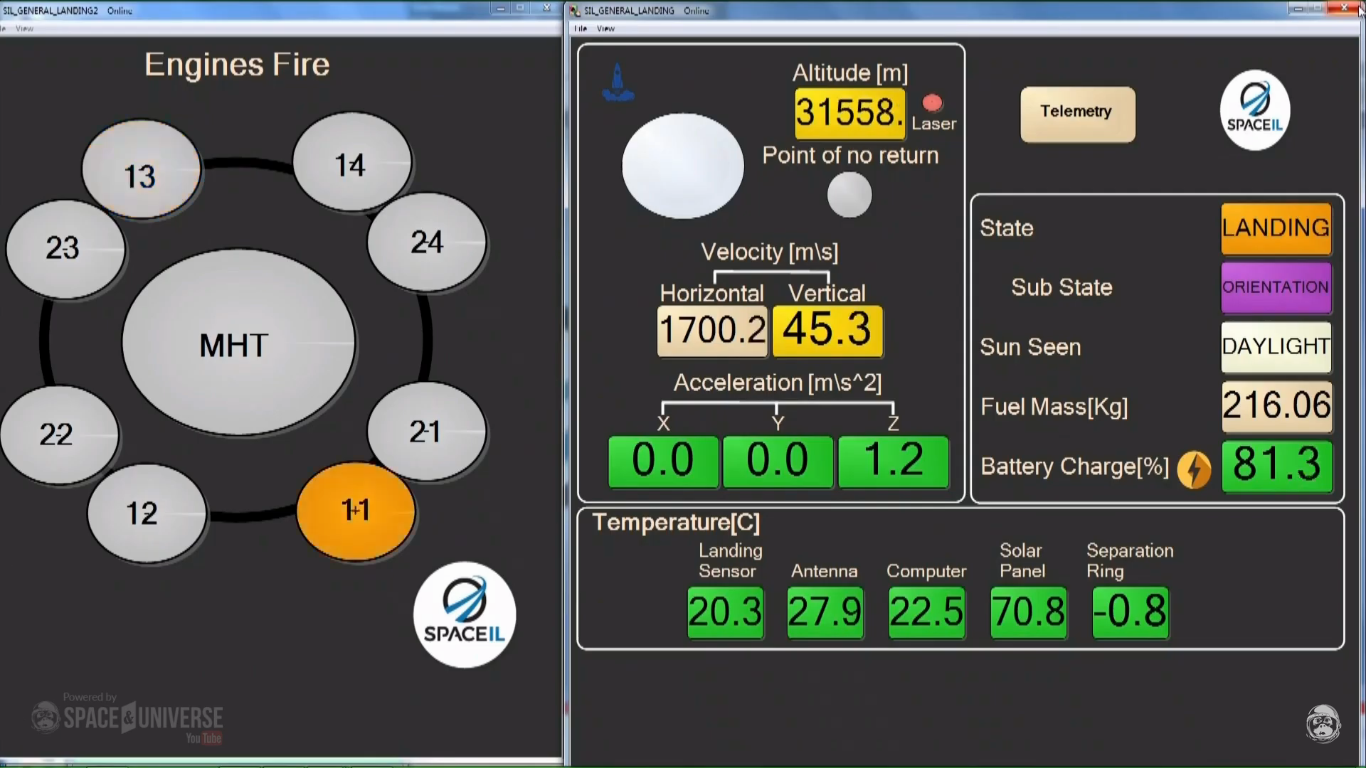

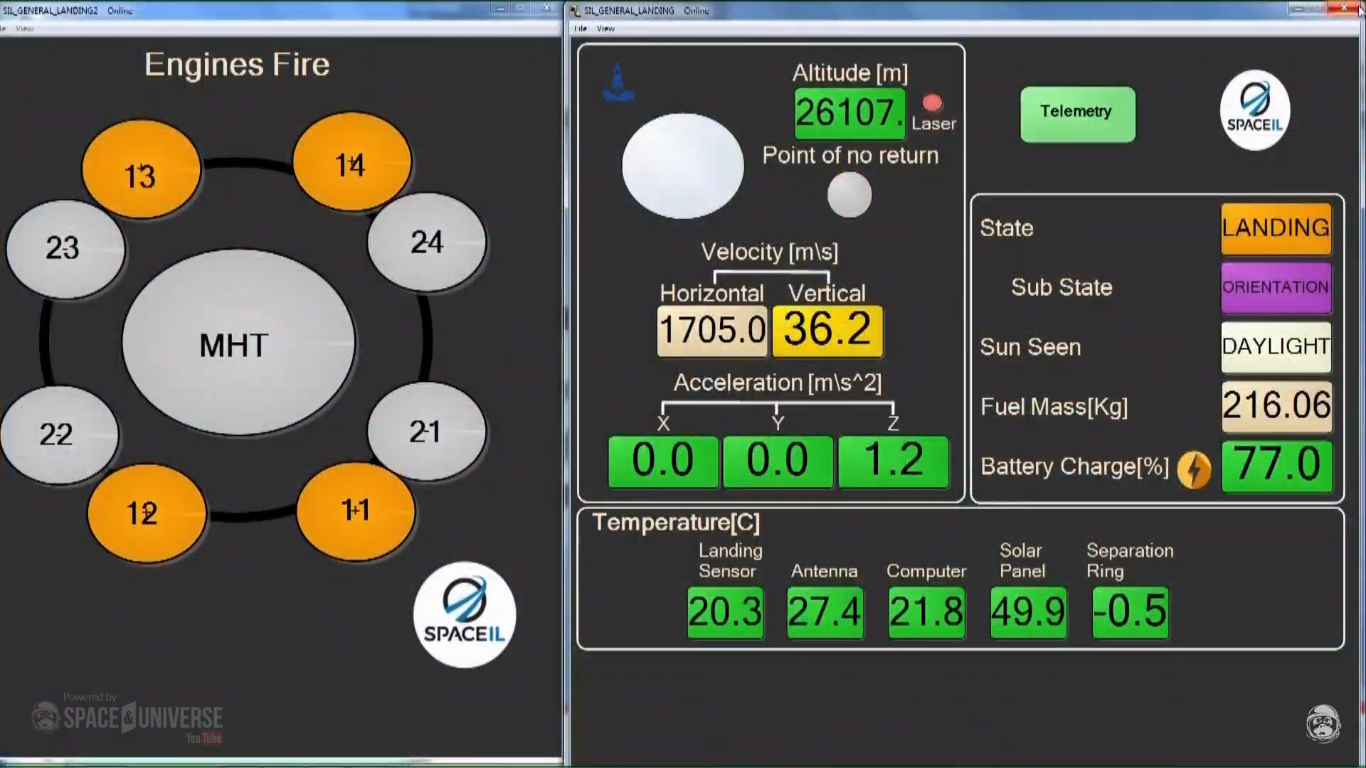
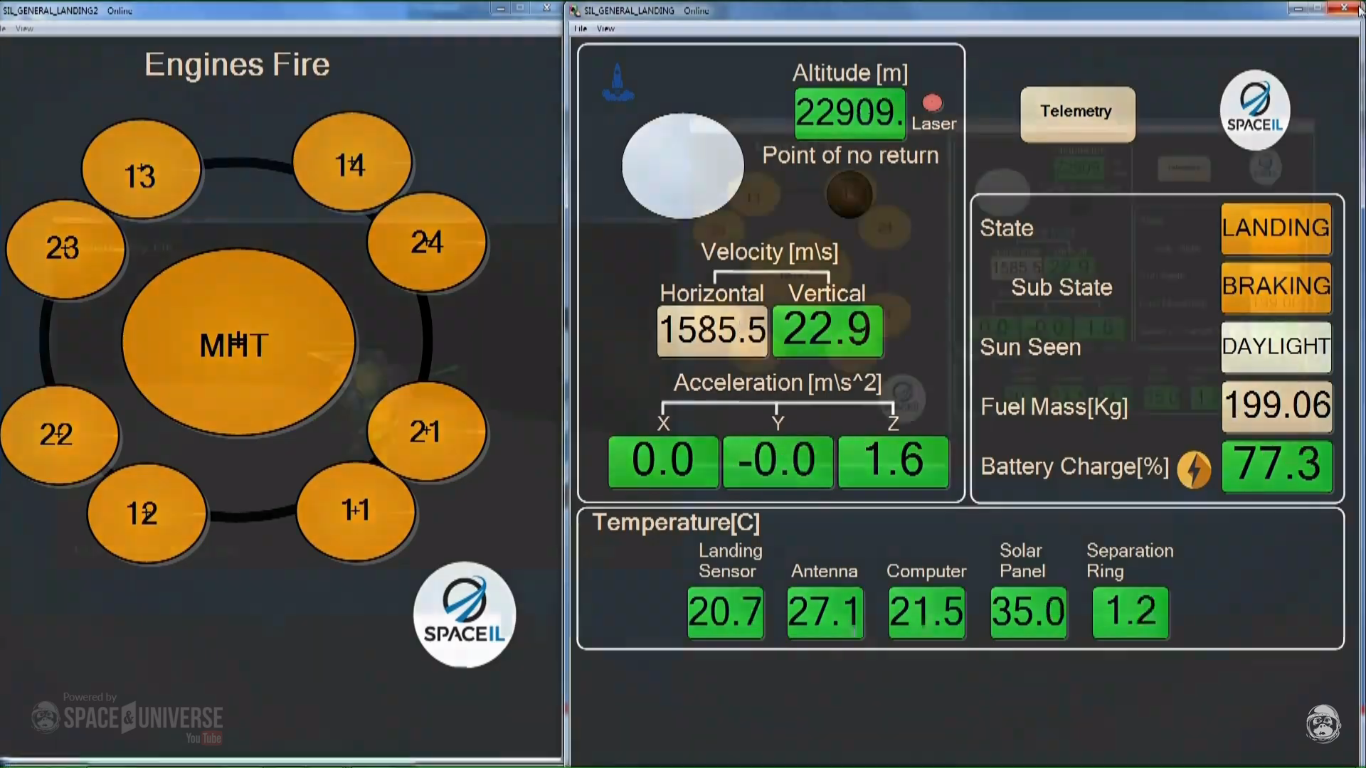
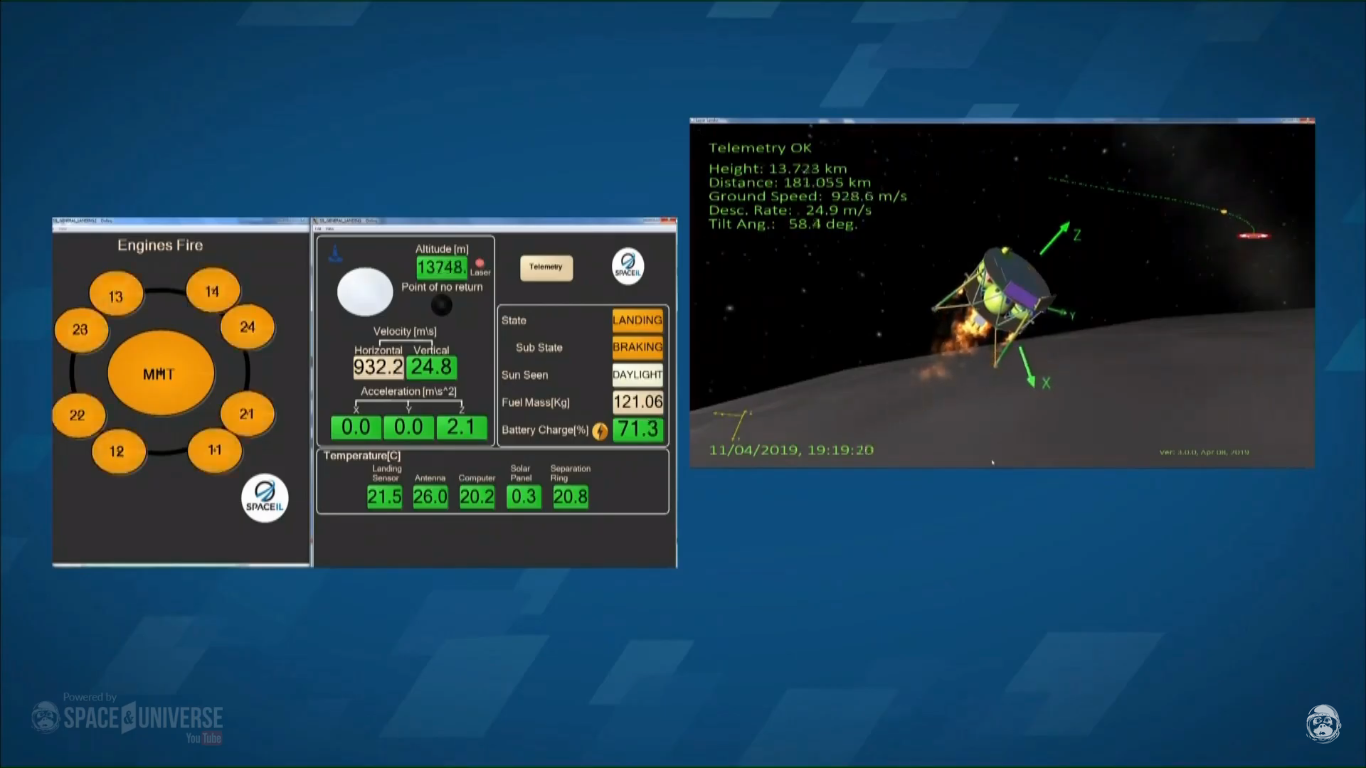
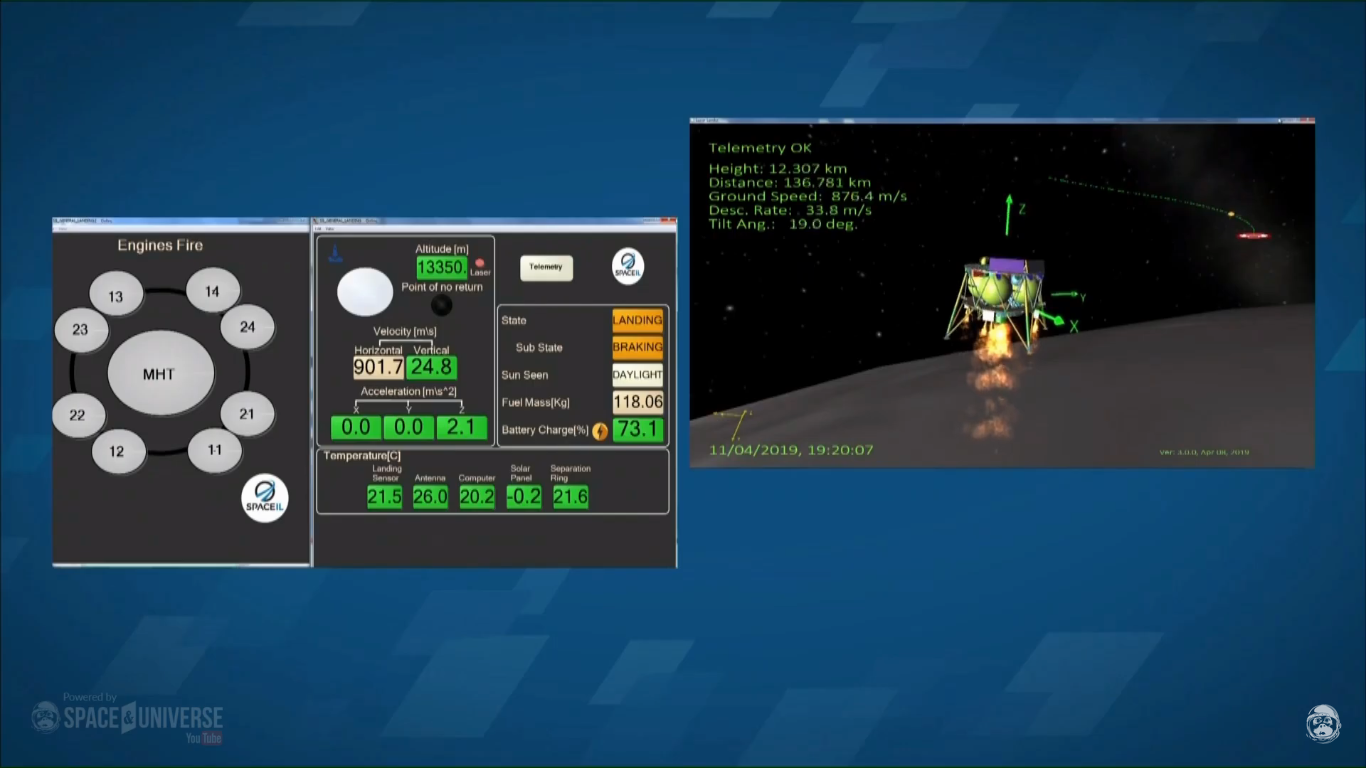





Telemetry data has ceased to arrive, the main engine turned off and the onboard system did not have time to reboot, this malfunction led to a hard landing at high speed and from a height of more than 150 meters to the moon due to the failure of one of the inertial orientation units.
Problem in one of Beresheet's inertial measurement units. Ground controllers lost telemetry for a few moments but have reacquired telemetry.
We are still investigating. Our first observations showed that the spacecraft started to lose altitude from 10km above the Moon's surface at a speed of 400-500km / h until the loss of communications, followed by a crash on the Moon's surface.

It will be difficult to find the place of the fall:


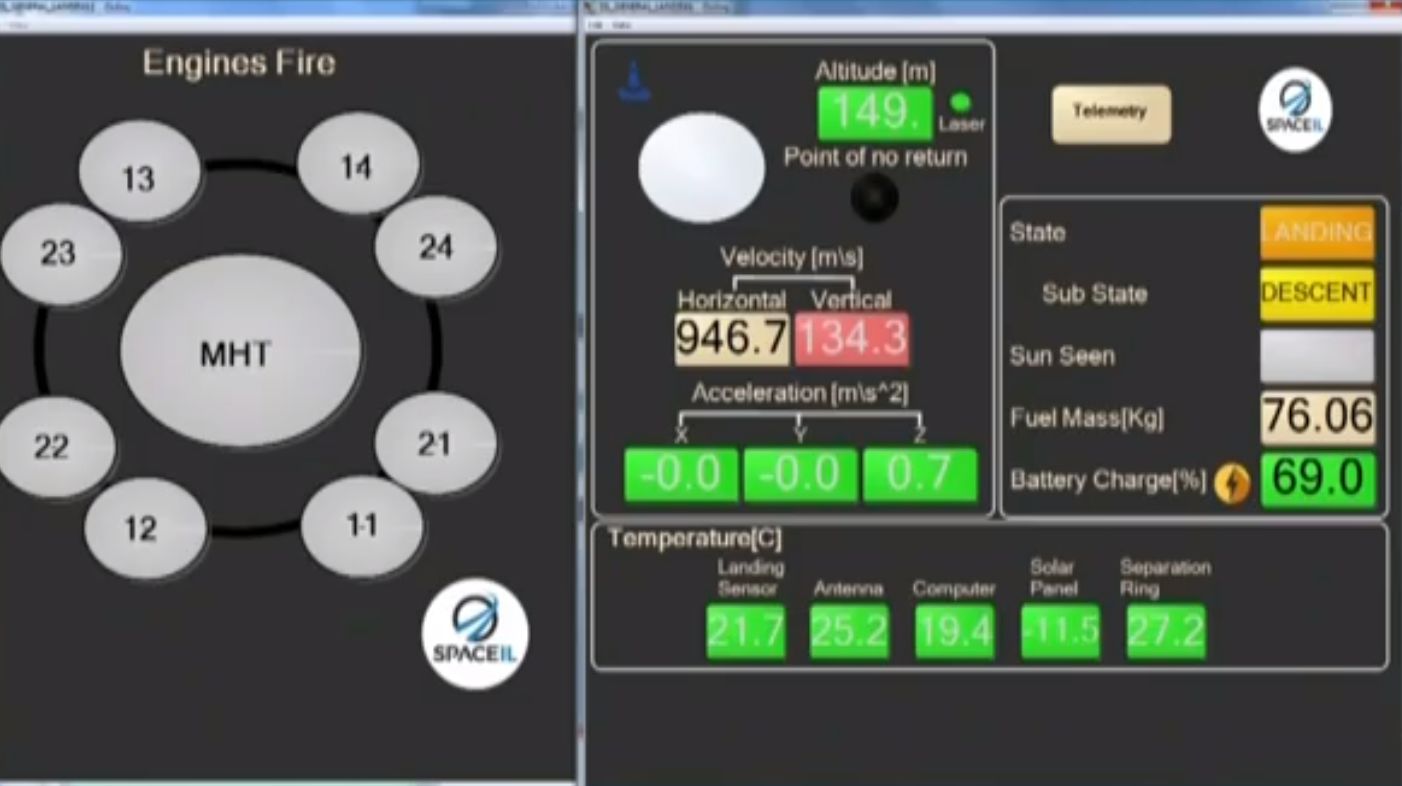


The last shot from the Bereshit apparatus (from an altitude of 8 km):
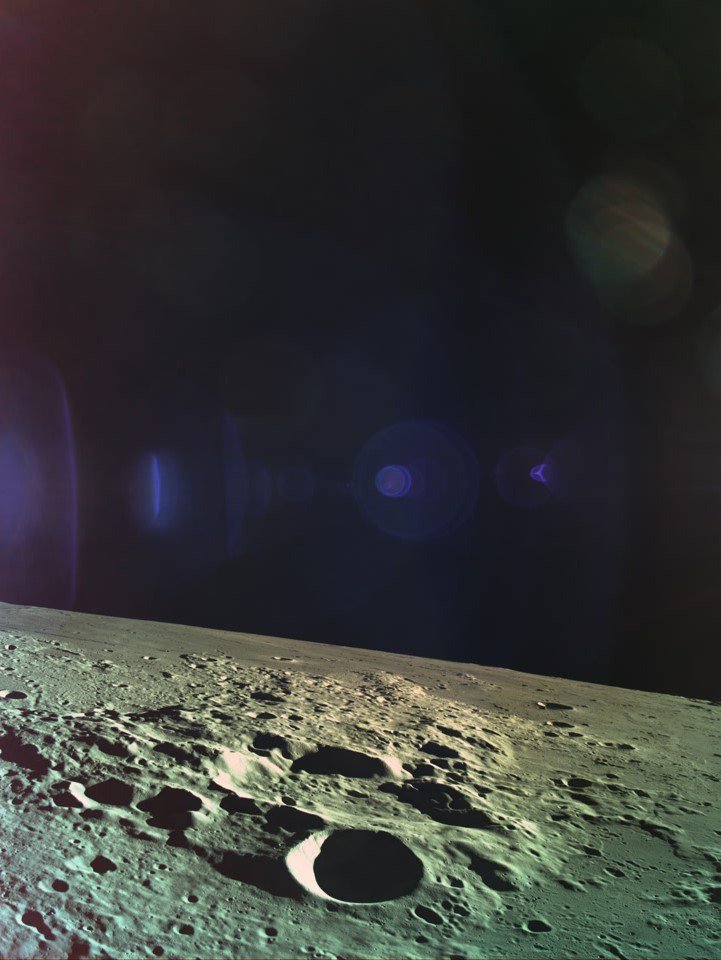
200 km to the northeast - Apollo 11 landing zone:

Photo from an onboard camera from an altitude of 22 km from the lunar surface:

Engineers do not cry:


Watch for the mission “Bereshit” was possible with the help of:
- an online resourcewith a simulator and real-time data on the current state of the Bereshit mission;
- NASA's online simulator “ Eyes on the Solar System ”.
Also, it turns out that there is such an interesting portal for exploring the Bereshit mission and monitoring the device’s parameters: “ Where is Beresheet Probe ”.
What next?
SpaceIL planned, developed, and implemented the Bereshit mission as a one-time mission, but now they plan to repeat it more successfully in a couple of years.
However, the IAI (Israel Aerospace Industries) plans to continue developing this lunar program, with which 30-60 kg of scientific payload can be delivered to the moon.
In addition, the IAI concern already has an agreement with the German company OHB, which envisages the use of such Bereshit-type spacecraft for missions for the European Space Agency (ESA).


